Itinerary
Day programme:
Your Arctic expedition begins in Calgary. Explore this vibrant city on your own before spending the night at your well-appointed hotel.
Day programme:
This morning, board your charter flight to Resolute. Upon arrival, you’ll have a chance to walk around this small Arctic town before enjoying your first of many Zodiac cruises as you’re transferred to your ship.
Day programme:
Cruising around the remote regions of the Canadian Arctic aboard Ocean Explorer, the newest ship in our fleet, you’ll navigate the same icy inlets, channels and bays that fascinated legendary explorers of long ago. Throughout your journey, your Expedition Team will keep an eye toward immersing you in the best the Arctic has to offer at the top of the world. Named after explorer Frederick William Beechey, of the Royal Navy, Beechey Island is a Canadian National Historic Site. It’s an important stop on our voyage, as this is the final resting place of three members of Sir John Franklin’s ill-fated 1845–46 expedition to find the Northwest Passage. The graves, on a remote windswept raised beach, were discovered in 1851 by the crew of British and American vessels searching for signs of Franklin’s lost expedition. Radstock Bay is a popular research location for observing polar bears, which are often seen here in summer. An impressive Thule archaeological site provides insight into how these pre-Inuit people lived in the Far North. For almost 5,000 years, the hamlet of Arctic Bay and its surrounding area has been occupied by Inuit people who were previously nomads migrating from the west. Surrounded by soaring cliffs teeming with seabirds, this is a great spot to go ashore and learn about the Inuit community’s traditional way of life. The eastern end of Lancaster Sound affords hiking and cruising opportunities on Devon Island. At Dundas Harbour, trek along a beach to a former Royal Canadian Mounted Police outpost. We’ll anchor at Croker Bay, where we’ll cruise near enough to appreciate the splendor of glacial textures and calving ice, while always keeping a safe distance. Walrus frequent the waters here, so be sure to have your camera handy. Canada’s most northern settlement, Grise Fiord will be your final shore visit in the Canadian High Arctic. Now home to about 150 residents, the mostly Inuit community was created in 1953, when the federal government forcefully relocated eight Inuit families from northern Quebec. Hunting and fishing are a significant part of their way of life. Visit the monument to the first Inuit settlers, as well as the remnants of the “old camp” where they lived.
Day programme:
Cruising around the remote regions of the Canadian Arctic aboard Ocean Explorer, the newest ship in our fleet, you’ll navigate the same icy inlets, channels and bays that fascinated legendary explorers of long ago. Throughout your journey, your Expedition Team will keep an eye toward immersing you in the best the Arctic has to offer at the top of the world. Named after explorer Frederick William Beechey, of the Royal Navy, Beechey Island is a Canadian National Historic Site. It’s an important stop on our voyage, as this is the final resting place of three members of Sir John Franklin’s ill-fated 1845–46 expedition to find the Northwest Passage. The graves, on a remote windswept raised beach, were discovered in 1851 by the crew of British and American vessels searching for signs of Franklin’s lost expedition. Radstock Bay is a popular research location for observing polar bears, which are often seen here in summer. An impressive Thule archaeological site provides insight into how these pre-Inuit people lived in the Far North. For almost 5,000 years, the hamlet of Arctic Bay and its surrounding area has been occupied by Inuit people who were previously nomads migrating from the west. Surrounded by soaring cliffs teeming with seabirds, this is a great spot to go ashore and learn about the Inuit community’s traditional way of life. The eastern end of Lancaster Sound affords hiking and cruising opportunities on Devon Island. At Dundas Harbour, trek along a beach to a former Royal Canadian Mounted Police outpost. We’ll anchor at Croker Bay, where we’ll cruise near enough to appreciate the splendor of glacial textures and calving ice, while always keeping a safe distance. Walrus frequent the waters here, so be sure to have your camera handy. Canada’s most northern settlement, Grise Fiord will be your final shore visit in the Canadian High Arctic. Now home to about 150 residents, the mostly Inuit community was created in 1953, when the federal government forcefully relocated eight Inuit families from northern Quebec. Hunting and fishing are a significant part of their way of life. Visit the monument to the first Inuit settlers, as well as the remnants of the “old camp” where they lived.
Day programme:
Cruising around the remote regions of the Canadian Arctic aboard Ocean Explorer, the newest ship in our fleet, you’ll navigate the same icy inlets, channels and bays that fascinated legendary explorers of long ago. Throughout your journey, your Expedition Team will keep an eye toward immersing you in the best the Arctic has to offer at the top of the world. Named after explorer Frederick William Beechey, of the Royal Navy, Beechey Island is a Canadian National Historic Site. It’s an important stop on our voyage, as this is the final resting place of three members of Sir John Franklin’s ill-fated 1845–46 expedition to find the Northwest Passage. The graves, on a remote windswept raised beach, were discovered in 1851 by the crew of British and American vessels searching for signs of Franklin’s lost expedition. Radstock Bay is a popular research location for observing polar bears, which are often seen here in summer. An impressive Thule archaeological site provides insight into how these pre-Inuit people lived in the Far North. For almost 5,000 years, the hamlet of Arctic Bay and its surrounding area has been occupied by Inuit people who were previously nomads migrating from the west. Surrounded by soaring cliffs teeming with seabirds, this is a great spot to go ashore and learn about the Inuit community’s traditional way of life. The eastern end of Lancaster Sound affords hiking and cruising opportunities on Devon Island. At Dundas Harbour, trek along a beach to a former Royal Canadian Mounted Police outpost. We’ll anchor at Croker Bay, where we’ll cruise near enough to appreciate the splendor of glacial textures and calving ice, while always keeping a safe distance. Walrus frequent the waters here, so be sure to have your camera handy. Canada’s most northern settlement, Grise Fiord will be your final shore visit in the Canadian High Arctic. Now home to about 150 residents, the mostly Inuit community was created in 1953, when the federal government forcefully relocated eight Inuit families from northern Quebec. Hunting and fishing are a significant part of their way of life. Visit the monument to the first Inuit settlers, as well as the remnants of the “old camp” where they lived.
Day programme:
Cruising around the remote regions of the Canadian Arctic aboard Ocean Explorer, the newest ship in our fleet, you’ll navigate the same icy inlets, channels and bays that fascinated legendary explorers of long ago. Throughout your journey, your Expedition Team will keep an eye toward immersing you in the best the Arctic has to offer at the top of the world. Named after explorer Frederick William Beechey, of the Royal Navy, Beechey Island is a Canadian National Historic Site. It’s an important stop on our voyage, as this is the final resting place of three members of Sir John Franklin’s ill-fated 1845–46 expedition to find the Northwest Passage. The graves, on a remote windswept raised beach, were discovered in 1851 by the crew of British and American vessels searching for signs of Franklin’s lost expedition. Radstock Bay is a popular research location for observing polar bears, which are often seen here in summer. An impressive Thule archaeological site provides insight into how these pre-Inuit people lived in the Far North. For almost 5,000 years, the hamlet of Arctic Bay and its surrounding area has been occupied by Inuit people who were previously nomads migrating from the west. Surrounded by soaring cliffs teeming with seabirds, this is a great spot to go ashore and learn about the Inuit community’s traditional way of life. The eastern end of Lancaster Sound affords hiking and cruising opportunities on Devon Island. At Dundas Harbour, trek along a beach to a former Royal Canadian Mounted Police outpost. We’ll anchor at Croker Bay, where we’ll cruise near enough to appreciate the splendor of glacial textures and calving ice, while always keeping a safe distance. Walrus frequent the waters here, so be sure to have your camera handy. Canada’s most northern settlement, Grise Fiord will be your final shore visit in the Canadian High Arctic. Now home to about 150 residents, the mostly Inuit community was created in 1953, when the federal government forcefully relocated eight Inuit families from northern Quebec. Hunting and fishing are a significant part of their way of life. Visit the monument to the first Inuit settlers, as well as the remnants of the “old camp” where they lived.
Day programme:
Before saying goodbye to Canada, we’ll try to cruise as far north as possible, exploring both sides of Smith Sound, the uninhabited passage between Ellesmere Island and Greenland.
Day programme:
Before saying goodbye to Canada, we’ll try to cruise as far north as possible, exploring both sides of Smith Sound, the uninhabited passage between Ellesmere Island and Greenland.
In AD 850, the Vikings established their parliament in Tórshavn, a name which translates as “Thor’s harbor.” It was named after Thor, the god of thunder and lightning in Norse mythology. The town became a center of trade for the island, and in fact was designated as the only legal place for the islanders to sell and buy products. This trade monopoly was abolished in 1856. Today it is the capital and largest city of the Faroe Islands, with fish-processing plants, a shipyard, and woolen products making up. It is considered to be one of the oldest capitals in Northern Europe.
Day programme:
Your first stop in Greenland is Qaanaaq, formerly known as Thule, one of the northernmost towns in the world. Here, local Inuit share their culture and traditions, and the museum sheds more light on what it’s like living near the top of the world.
Day programme:
With spectacular glaciers, soaring fjords and vibrant communities, the west coast of Greenland will leave you breathless. Nuussuaq (formerly known as Kraulshavn) is the only mainland community in the Upernavik Archipelago. Founded in 1923 as a trading station, it’s one of the most traditional hunting and fishing villages in Greenland. Each community visit in Greenland is a unique experience and Uummannaq might just steal your heart. It’s not surprising that the red-hued, heart-shaped mountain that rises up behind gave this traditional village its name (Uummannaq means “heart-like” in Greenlandic). As your ship approaches the shore, you’ll want to be on deck to take in the incredible view of the twin peaks towering over the vibrantly painted wooden houses dotting the rocky terrain below. The settlement was established as a Danish colony in 1758 on the mainland, but it relocated five years later because seal hunting was more plentiful here. In the nearby archaeological site of Qilaqitsoq (also written as Qilakitsoq), you’ll visit the ruins of an ancient settlement, where the remains of eight fully dressed mummies were discovered under a rock outcrop in 1972 by a pair of hunters. The famous Greenlandic mummies, which date back to 1475 A.D., are on view at the Greenland National Museum in Nuuk. Cruising farther south rewards with spectacular views of Eqip Sermia. The jagged, blue-tinged glacier soaring out of the icy waters is one of the most beautiful sights in Greenland, and we hope to Zodiac cruise along its massive front from a safe distance. We may also go ashore to explore nearby. Just south of Ilulissat, which means “iceberg” in Greenlandic, is the impressive Ilulissat Icefjord. The UNESCO World Heritage Site is home to Sermeq Kujalleq, the most productive glacier in the northern hemisphere. As we Zodiac cruise at the mouth of the fjord, you may be lucky to witness the wonders of calving ice (listen to the loud roars as the ice breaks off). Founded in 1741, the traditional town, which boasts more sled dogs than people, is famous in its own right: it was the birthplace of explorer and anthropologist Knud Rasmussen, the first to traverse the Northwest Passage by dogsled, in the early 1920s . Hikes here lead out to stunning views of the young icebergs as they float out the fjord to Disko Bay. In Sisimiut, you’ll be treated to a traditional kayaking demonstration. The kayak (an Inuit word that the English borrowed) has become a national symbol of Greenland and has been used by Inuit hunters for thousands of years. The town has several 18th-century colonial buildings, including the oldest surviving church in Greenland, so take time to wander through the historic area. Surrounded by sea and mountains, Itilleq is situated about a mile (2 km) above the Arctic Circle, in a scenic hollow on a small island. It is the southern limit of the Greenlandic sled dog. To keep the breed pure, the dogs are not permitted south of this community and all other dog breeds are prohibited this far north. It’s also known as a welcoming community, where you might experience “kaffemik,” a Greenlandic tradition of inviting visitors in for coffee, cakes and conversation. Explore the town’s charming wooden houses painted in a rainbow of colors, chat with the locals, whose main trade is fishing, and maybe challenge them to a game of football (soccer) —it won’t be long before you’re experiencing Itilleq’s famous friendly vibe.
Day programme:
With spectacular glaciers, soaring fjords and vibrant communities, the west coast of Greenland will leave you breathless. Nuussuaq (formerly known as Kraulshavn) is the only mainland community in the Upernavik Archipelago. Founded in 1923 as a trading station, it’s one of the most traditional hunting and fishing villages in Greenland. Each community visit in Greenland is a unique experience and Uummannaq might just steal your heart. It’s not surprising that the red-hued, heart-shaped mountain that rises up behind gave this traditional village its name (Uummannaq means “heart-like” in Greenlandic). As your ship approaches the shore, you’ll want to be on deck to take in the incredible view of the twin peaks towering over the vibrantly painted wooden houses dotting the rocky terrain below. The settlement was established as a Danish colony in 1758 on the mainland, but it relocated five years later because seal hunting was more plentiful here. In the nearby archaeological site of Qilaqitsoq (also written as Qilakitsoq), you’ll visit the ruins of an ancient settlement, where the remains of eight fully dressed mummies were discovered under a rock outcrop in 1972 by a pair of hunters. The famous Greenlandic mummies, which date back to 1475 A.D., are on view at the Greenland National Museum in Nuuk. Cruising farther south rewards with spectacular views of Eqip Sermia. The jagged, blue-tinged glacier soaring out of the icy waters is one of the most beautiful sights in Greenland, and we hope to Zodiac cruise along its massive front from a safe distance. We may also go ashore to explore nearby. Just south of Ilulissat, which means “iceberg” in Greenlandic, is the impressive Ilulissat Icefjord. The UNESCO World Heritage Site is home to Sermeq Kujalleq, the most productive glacier in the northern hemisphere. As we Zodiac cruise at the mouth of the fjord, you may be lucky to witness the wonders of calving ice (listen to the loud roars as the ice breaks off). Founded in 1741, the traditional town, which boasts more sled dogs than people, is famous in its own right: it was the birthplace of explorer and anthropologist Knud Rasmussen, the first to traverse the Northwest Passage by dogsled, in the early 1920s . Hikes here lead out to stunning views of the young icebergs as they float out the fjord to Disko Bay. In Sisimiut, you’ll be treated to a traditional kayaking demonstration. The kayak (an Inuit word that the English borrowed) has become a national symbol of Greenland and has been used by Inuit hunters for thousands of years. The town has several 18th-century colonial buildings, including the oldest surviving church in Greenland, so take time to wander through the historic area. Surrounded by sea and mountains, Itilleq is situated about a mile (2 km) above the Arctic Circle, in a scenic hollow on a small island. It is the southern limit of the Greenlandic sled dog. To keep the breed pure, the dogs are not permitted south of this community and all other dog breeds are prohibited this far north. It’s also known as a welcoming community, where you might experience “kaffemik,” a Greenlandic tradition of inviting visitors in for coffee, cakes and conversation. Explore the town’s charming wooden houses painted in a rainbow of colors, chat with the locals, whose main trade is fishing, and maybe challenge them to a game of football (soccer) —it won’t be long before you’re experiencing Itilleq’s famous friendly vibe.
Day programme:
With spectacular glaciers, soaring fjords and vibrant communities, the west coast of Greenland will leave you breathless. Nuussuaq (formerly known as Kraulshavn) is the only mainland community in the Upernavik Archipelago. Founded in 1923 as a trading station, it’s one of the most traditional hunting and fishing villages in Greenland. Each community visit in Greenland is a unique experience and Uummannaq might just steal your heart. It’s not surprising that the red-hued, heart-shaped mountain that rises up behind gave this traditional village its name (Uummannaq means “heart-like” in Greenlandic). As your ship approaches the shore, you’ll want to be on deck to take in the incredible view of the twin peaks towering over the vibrantly painted wooden houses dotting the rocky terrain below. The settlement was established as a Danish colony in 1758 on the mainland, but it relocated five years later because seal hunting was more plentiful here. In the nearby archaeological site of Qilaqitsoq (also written as Qilakitsoq), you’ll visit the ruins of an ancient settlement, where the remains of eight fully dressed mummies were discovered under a rock outcrop in 1972 by a pair of hunters. The famous Greenlandic mummies, which date back to 1475 A.D., are on view at the Greenland National Museum in Nuuk. Cruising farther south rewards with spectacular views of Eqip Sermia. The jagged, blue-tinged glacier soaring out of the icy waters is one of the most beautiful sights in Greenland, and we hope to Zodiac cruise along its massive front from a safe distance. We may also go ashore to explore nearby. Just south of Ilulissat, which means “iceberg” in Greenlandic, is the impressive Ilulissat Icefjord. The UNESCO World Heritage Site is home to Sermeq Kujalleq, the most productive glacier in the northern hemisphere. As we Zodiac cruise at the mouth of the fjord, you may be lucky to witness the wonders of calving ice (listen to the loud roars as the ice breaks off). Founded in 1741, the traditional town, which boasts more sled dogs than people, is famous in its own right: it was the birthplace of explorer and anthropologist Knud Rasmussen, the first to traverse the Northwest Passage by dogsled, in the early 1920s . Hikes here lead out to stunning views of the young icebergs as they float out the fjord to Disko Bay. In Sisimiut, you’ll be treated to a traditional kayaking demonstration. The kayak (an Inuit word that the English borrowed) has become a national symbol of Greenland and has been used by Inuit hunters for thousands of years. The town has several 18th-century colonial buildings, including the oldest surviving church in Greenland, so take time to wander through the historic area. Surrounded by sea and mountains, Itilleq is situated about a mile (2 km) above the Arctic Circle, in a scenic hollow on a small island. It is the southern limit of the Greenlandic sled dog. To keep the breed pure, the dogs are not permitted south of this community and all other dog breeds are prohibited this far north. It’s also known as a welcoming community, where you might experience “kaffemik,” a Greenlandic tradition of inviting visitors in for coffee, cakes and conversation. Explore the town’s charming wooden houses painted in a rainbow of colors, chat with the locals, whose main trade is fishing, and maybe challenge them to a game of football (soccer) —it won’t be long before you’re experiencing Itilleq’s famous friendly vibe.
Day programme:
With spectacular glaciers, soaring fjords and vibrant communities, the west coast of Greenland will leave you breathless. Nuussuaq (formerly known as Kraulshavn) is the only mainland community in the Upernavik Archipelago. Founded in 1923 as a trading station, it’s one of the most traditional hunting and fishing villages in Greenland. Each community visit in Greenland is a unique experience and Uummannaq might just steal your heart. It’s not surprising that the red-hued, heart-shaped mountain that rises up behind gave this traditional village its name (Uummannaq means “heart-like” in Greenlandic). As your ship approaches the shore, you’ll want to be on deck to take in the incredible view of the twin peaks towering over the vibrantly painted wooden houses dotting the rocky terrain below. The settlement was established as a Danish colony in 1758 on the mainland, but it relocated five years later because seal hunting was more plentiful here. In the nearby archaeological site of Qilaqitsoq (also written as Qilakitsoq), you’ll visit the ruins of an ancient settlement, where the remains of eight fully dressed mummies were discovered under a rock outcrop in 1972 by a pair of hunters. The famous Greenlandic mummies, which date back to 1475 A.D., are on view at the Greenland National Museum in Nuuk. Cruising farther south rewards with spectacular views of Eqip Sermia. The jagged, blue-tinged glacier soaring out of the icy waters is one of the most beautiful sights in Greenland, and we hope to Zodiac cruise along its massive front from a safe distance. We may also go ashore to explore nearby. Just south of Ilulissat, which means “iceberg” in Greenlandic, is the impressive Ilulissat Icefjord. The UNESCO World Heritage Site is home to Sermeq Kujalleq, the most productive glacier in the northern hemisphere. As we Zodiac cruise at the mouth of the fjord, you may be lucky to witness the wonders of calving ice (listen to the loud roars as the ice breaks off). Founded in 1741, the traditional town, which boasts more sled dogs than people, is famous in its own right: it was the birthplace of explorer and anthropologist Knud Rasmussen, the first to traverse the Northwest Passage by dogsled, in the early 1920s . Hikes here lead out to stunning views of the young icebergs as they float out the fjord to Disko Bay. In Sisimiut, you’ll be treated to a traditional kayaking demonstration. The kayak (an Inuit word that the English borrowed) has become a national symbol of Greenland and has been used by Inuit hunters for thousands of years. The town has several 18th-century colonial buildings, including the oldest surviving church in Greenland, so take time to wander through the historic area. Surrounded by sea and mountains, Itilleq is situated about a mile (2 km) above the Arctic Circle, in a scenic hollow on a small island. It is the southern limit of the Greenlandic sled dog. To keep the breed pure, the dogs are not permitted south of this community and all other dog breeds are prohibited this far north. It’s also known as a welcoming community, where you might experience “kaffemik,” a Greenlandic tradition of inviting visitors in for coffee, cakes and conversation. Explore the town’s charming wooden houses painted in a rainbow of colors, chat with the locals, whose main trade is fishing, and maybe challenge them to a game of football (soccer) —it won’t be long before you’re experiencing Itilleq’s famous friendly vibe.
Day programme:
With spectacular glaciers, soaring fjords and vibrant communities, the west coast of Greenland will leave you breathless. Nuussuaq (formerly known as Kraulshavn) is the only mainland community in the Upernavik Archipelago. Founded in 1923 as a trading station, it’s one of the most traditional hunting and fishing villages in Greenland. Each community visit in Greenland is a unique experience and Uummannaq might just steal your heart. It’s not surprising that the red-hued, heart-shaped mountain that rises up behind gave this traditional village its name (Uummannaq means “heart-like” in Greenlandic). As your ship approaches the shore, you’ll want to be on deck to take in the incredible view of the twin peaks towering over the vibrantly painted wooden houses dotting the rocky terrain below. The settlement was established as a Danish colony in 1758 on the mainland, but it relocated five years later because seal hunting was more plentiful here. In the nearby archaeological site of Qilaqitsoq (also written as Qilakitsoq), you’ll visit the ruins of an ancient settlement, where the remains of eight fully dressed mummies were discovered under a rock outcrop in 1972 by a pair of hunters. The famous Greenlandic mummies, which date back to 1475 A.D., are on view at the Greenland National Museum in Nuuk. Cruising farther south rewards with spectacular views of Eqip Sermia. The jagged, blue-tinged glacier soaring out of the icy waters is one of the most beautiful sights in Greenland, and we hope to Zodiac cruise along its massive front from a safe distance. We may also go ashore to explore nearby. Just south of Ilulissat, which means “iceberg” in Greenlandic, is the impressive Ilulissat Icefjord. The UNESCO World Heritage Site is home to Sermeq Kujalleq, the most productive glacier in the northern hemisphere. As we Zodiac cruise at the mouth of the fjord, you may be lucky to witness the wonders of calving ice (listen to the loud roars as the ice breaks off). Founded in 1741, the traditional town, which boasts more sled dogs than people, is famous in its own right: it was the birthplace of explorer and anthropologist Knud Rasmussen, the first to traverse the Northwest Passage by dogsled, in the early 1920s . Hikes here lead out to stunning views of the young icebergs as they float out the fjord to Disko Bay. In Sisimiut, you’ll be treated to a traditional kayaking demonstration. The kayak (an Inuit word that the English borrowed) has become a national symbol of Greenland and has been used by Inuit hunters for thousands of years. The town has several 18th-century colonial buildings, including the oldest surviving church in Greenland, so take time to wander through the historic area. Surrounded by sea and mountains, Itilleq is situated about a mile (2 km) above the Arctic Circle, in a scenic hollow on a small island. It is the southern limit of the Greenlandic sled dog. To keep the breed pure, the dogs are not permitted south of this community and all other dog breeds are prohibited this far north. It’s also known as a welcoming community, where you might experience “kaffemik,” a Greenlandic tradition of inviting visitors in for coffee, cakes and conversation. Explore the town’s charming wooden houses painted in a rainbow of colors, chat with the locals, whose main trade is fishing, and maybe challenge them to a game of football (soccer) —it won’t be long before you’re experiencing Itilleq’s famous friendly vibe.
Sprawling Reykjavík, the nation’s nerve center and government seat, is home to half the island’s population. On a bay overlooked by proud Mt. Esja (pronounced eh-shyuh), with its ever-changing hues, Reykjavík presents a colorful sight, its concrete houses painted in light colors and topped by vibrant red, blue, and green roofs. In contrast to the almost treeless countryside, Reykjavík has many tall, native birches, rowans, and willows, as well as imported aspen, pines, and spruces.Reykjavík’s name comes from the Icelandic words for smoke, reykur, and bay, vík. In AD 874, Norseman Ingólfur Arnarson saw Iceland rising out of the misty sea and came ashore at a bay eerily shrouded with plumes of steam from nearby hot springs. Today most of the houses in Reykjavík are heated by near-boiling water from the hot springs. Natural heating avoids air pollution; there’s no smoke around. You may notice, however, that the hot water brings a slight sulfur smell to the bathroom.Prices are easily on a par with other major European cities. A practical option is to purchase a Reykjavík City Card at the Tourist Information Center or at the Reykjavík Youth Hostel. This card permits unlimited bus usage and admission to any of the city’s seven pools, the Family Park and Zoo, and city museums. The cards are valid for one (ISK 3,300), two (ISK 4,400), or three days (ISK 4,900), and they pay for themselves after three or four uses a day. Even lacking the City Card, paying admission (ISK 500, or ISK 250 for seniors and people with disabilities) to one of the city art museums (Hafnarhús, Kjarvalsstaðir, or Ásmundarsafn) gets you free same-day admission to the other two.
Day programme:
Enjoy one more Zodiac ride to shore, where you’ll board your charter flight back to Reykjavik, Iceland. Upon arrival in Reykjavik, you will be transferred to your included hotel.
Sprawling Reykjavík, the nation’s nerve center and government seat, is home to half the island’s population. On a bay overlooked by proud Mt. Esja (pronounced eh-shyuh), with its ever-changing hues, Reykjavík presents a colorful sight, its concrete houses painted in light colors and topped by vibrant red, blue, and green roofs. In contrast to the almost treeless countryside, Reykjavík has many tall, native birches, rowans, and willows, as well as imported aspen, pines, and spruces.Reykjavík’s name comes from the Icelandic words for smoke, reykur, and bay, vík. In AD 874, Norseman Ingólfur Arnarson saw Iceland rising out of the misty sea and came ashore at a bay eerily shrouded with plumes of steam from nearby hot springs. Today most of the houses in Reykjavík are heated by near-boiling water from the hot springs. Natural heating avoids air pollution; there’s no smoke around. You may notice, however, that the hot water brings a slight sulfur smell to the bathroom.Prices are easily on a par with other major European cities. A practical option is to purchase a Reykjavík City Card at the Tourist Information Center or at the Reykjavík Youth Hostel. This card permits unlimited bus usage and admission to any of the city’s seven pools, the Family Park and Zoo, and city museums. The cards are valid for one (ISK 3,300), two (ISK 4,400), or three days (ISK 4,900), and they pay for themselves after three or four uses a day. Even lacking the City Card, paying admission (ISK 500, or ISK 250 for seniors and people with disabilities) to one of the city art museums (Hafnarhús, Kjarvalsstaðir, or Ásmundarsafn) gets you free same-day admission to the other two.
Day programme:
Today, you can make your way home at your leisure or spend some time exploring this fascinating city.
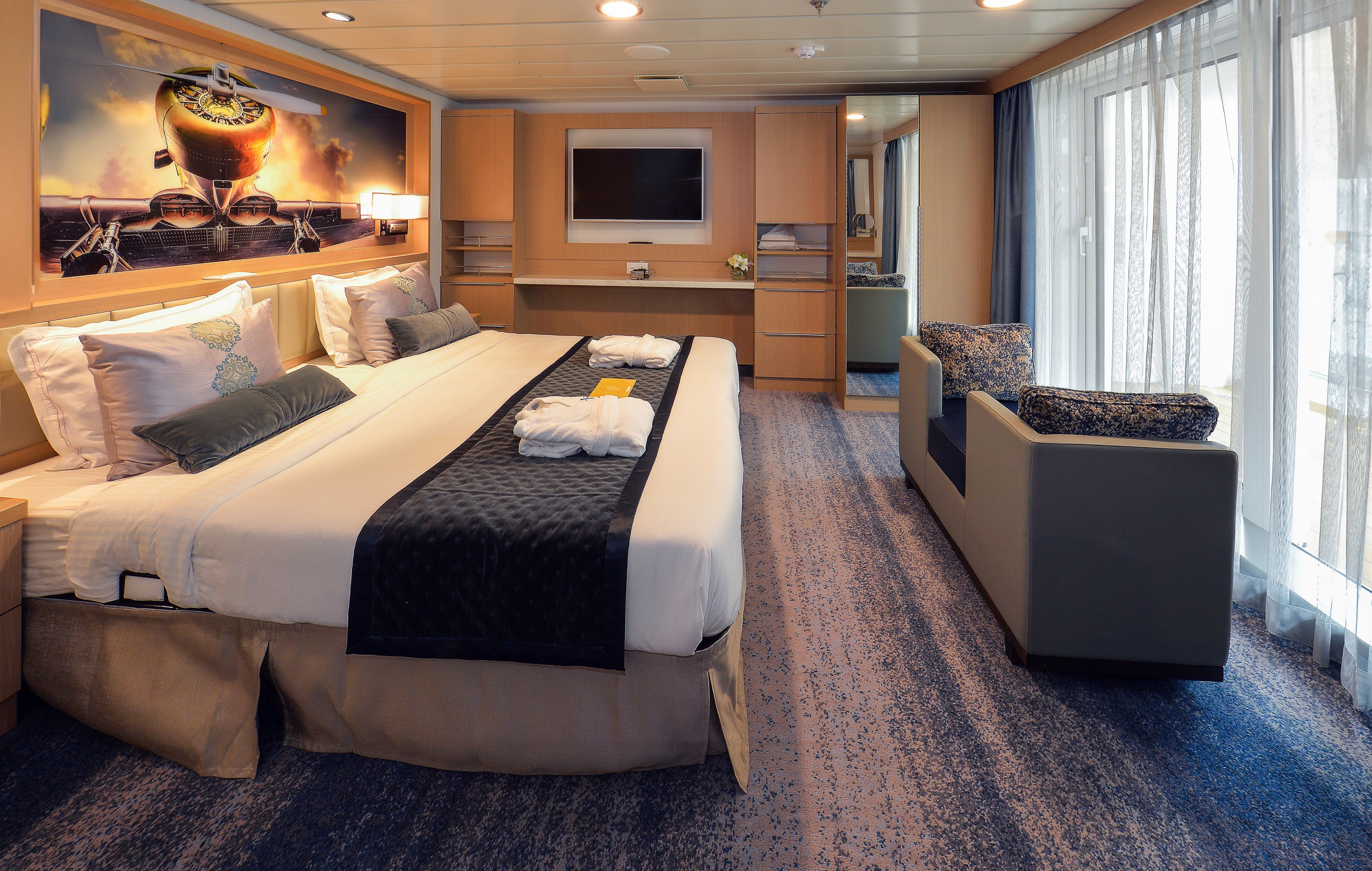
This palatial, airy apartment offers stunning views from its large private veranda on the highest cabin level. The luxurious suite features a large master bedroom, living room and dining area and two large master bathrooms, among other amenities.
Bed Config.
Two rooms. One double bed made up of two twin berths fold out sofa bed
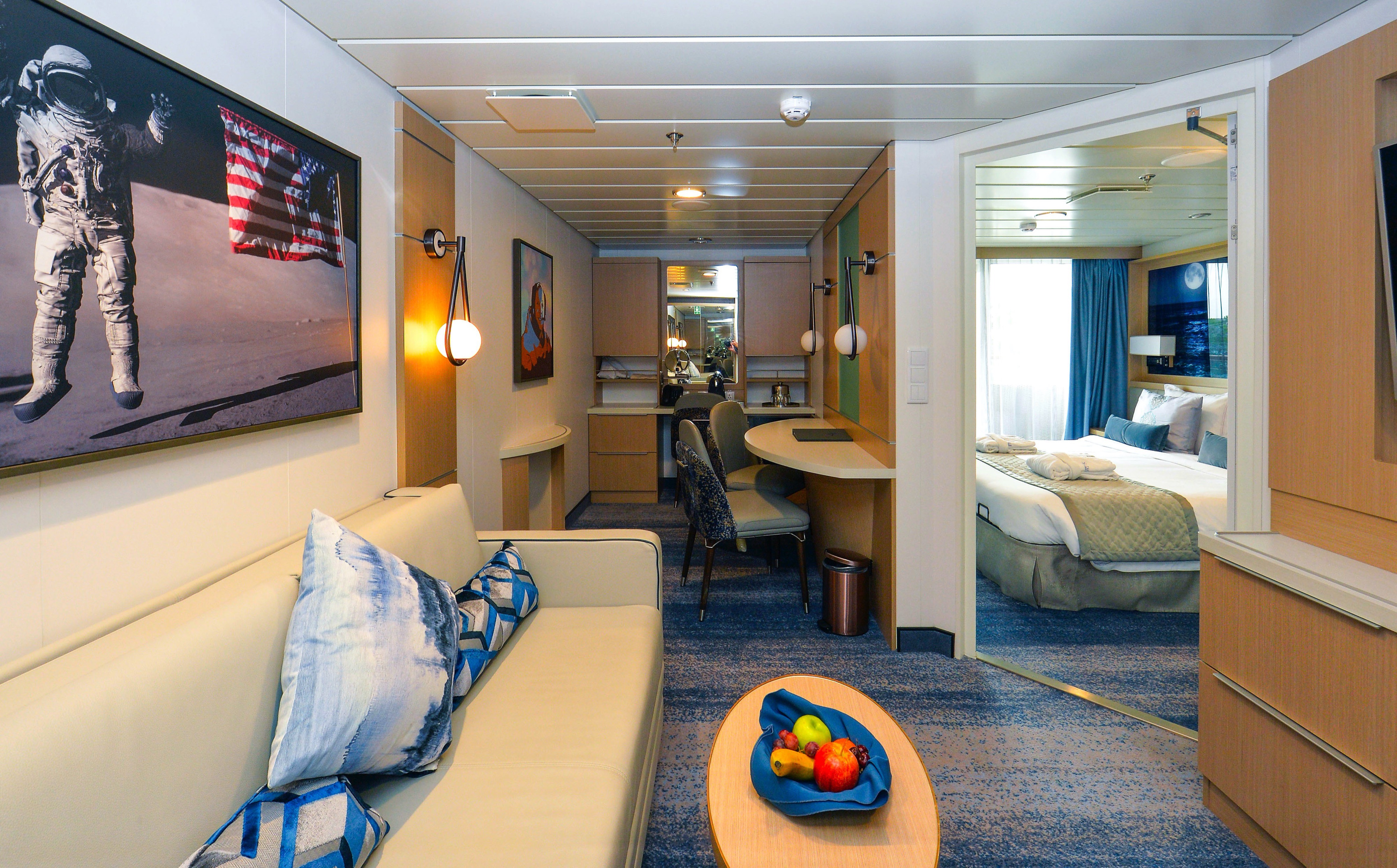
Located on Deck 6 and approximately 298 sq. f. (27.7 sq. m,) in size. These 2-room suites have one double bed that can be configured into two singles in the inner bedroom and an outer sitting room furnished with a sofa-bed, and activity table for two. From the bedroom there a floor to ceiling glass view that opens to a double sized walkout balcony. There are also 2 TV’s, state of the art ‘infotainment’ system and private bathroom with bathtub, vanity and heated floor.
Bed Config.
Two rooms. One double bed made up of two twin berths fold out sofa bed
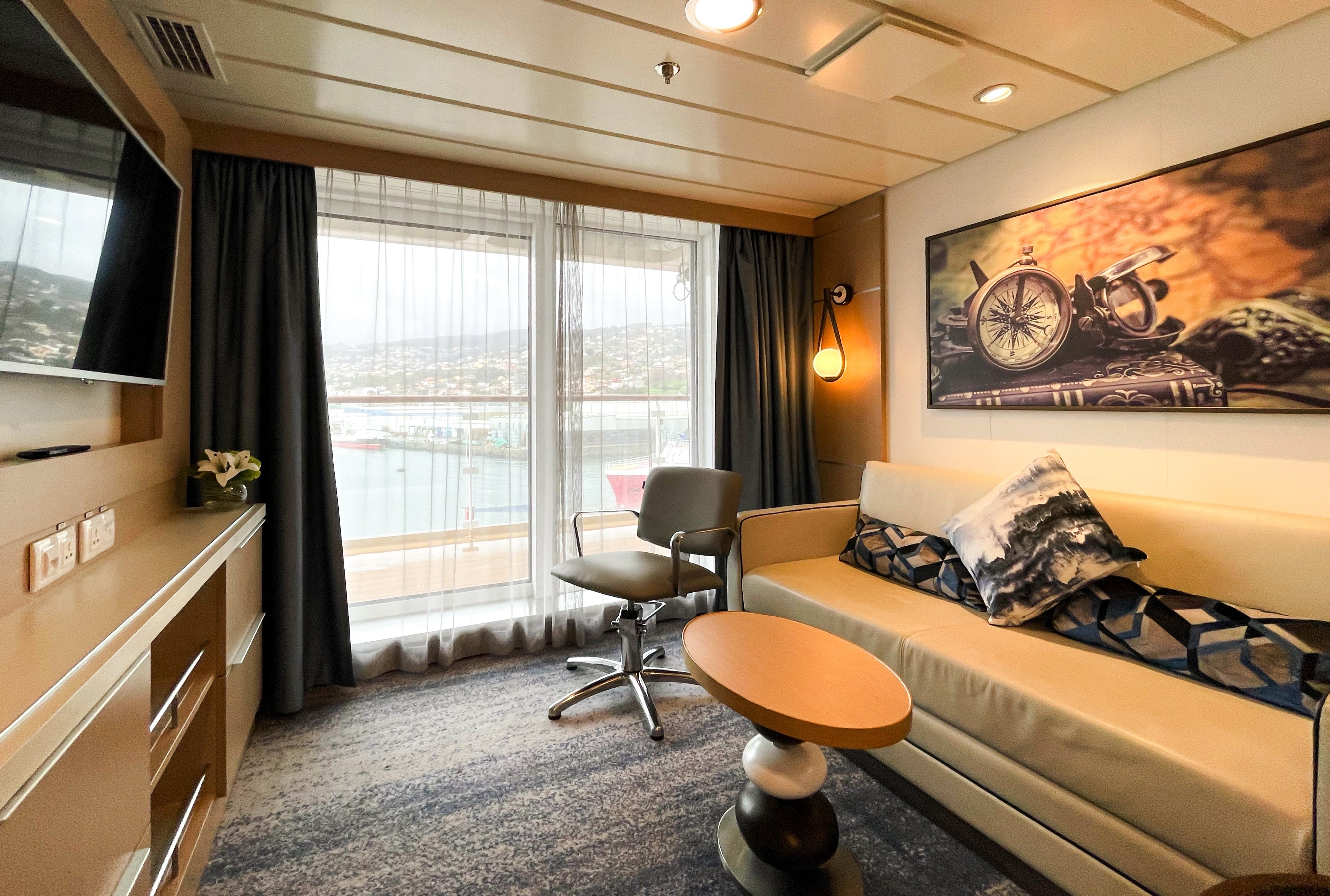
This unique 2-room suite is located on Deck 7 and is approximately 269 sq. f (25.0 sq. m.) in size. It has one double bed that can be configured into two singles in the inner bedroom and the outer sitting area is furnished with a sofa-bed. Walk-out from either room to a double sized balcony. There are also 2 TV’s, state of the art ‘infotainment’ system and private bathroom with shower, vanity and heated floor. And an additional powder room in the outside sitting area.
Bed Config.
Two rooms. One double bed made up of two twin berths fold out sofa bed
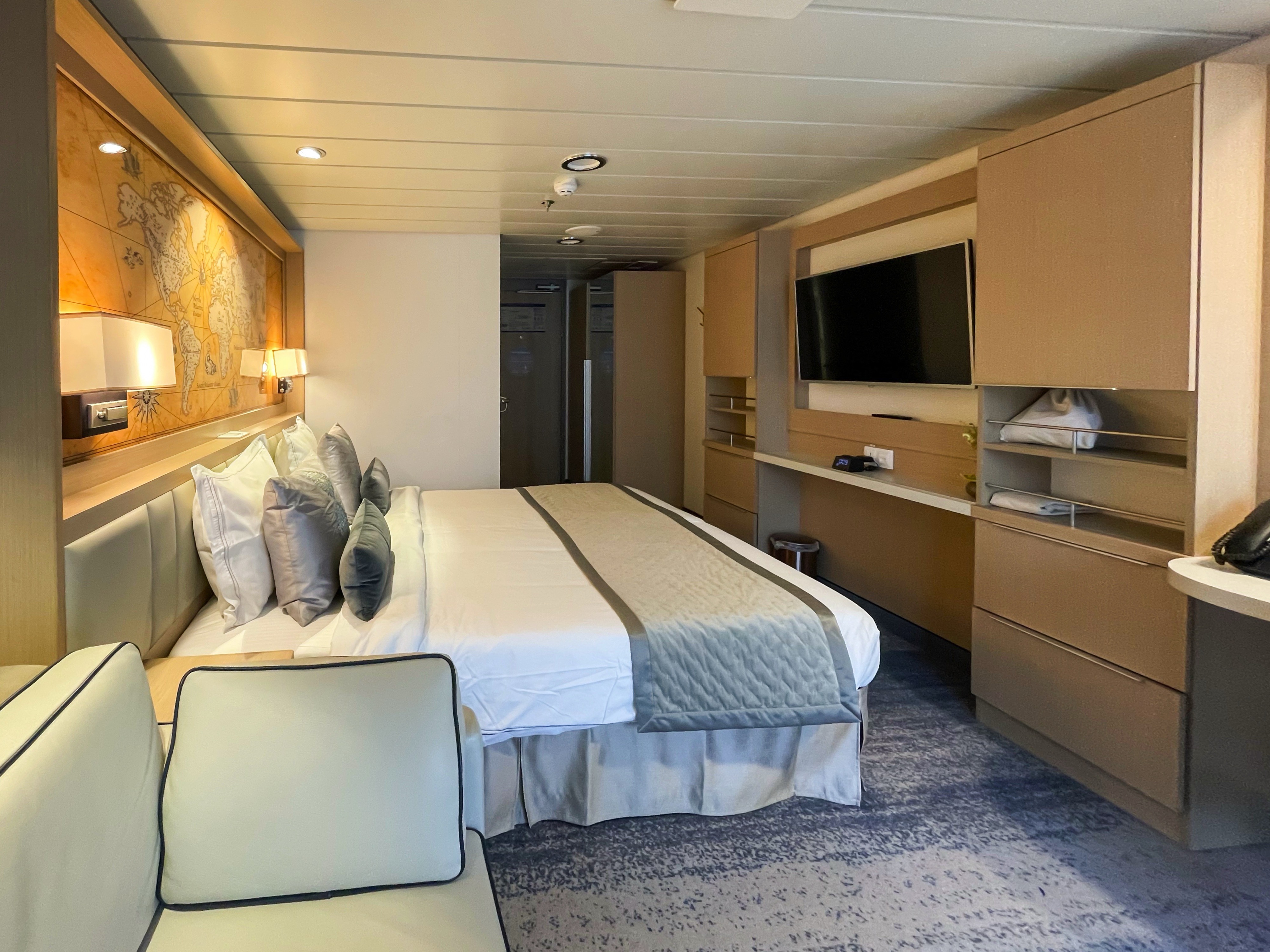
Located throughout the ship and approximately 205 sq. ft. (19.2 sq. m,) in size, these cabins have one double bed that can be configured into two singles, and separate sitting area furnished with a sofa-bed. There is a floor to ceiling glass view that opens to a walkout balcony. There is also a desk and chair, TV, state of the art ‘infotainment’ system and private bathroom with shower, vanity and heated floor.
Bed Config.
One double bed made up of two twin berths and fold out sofa bed
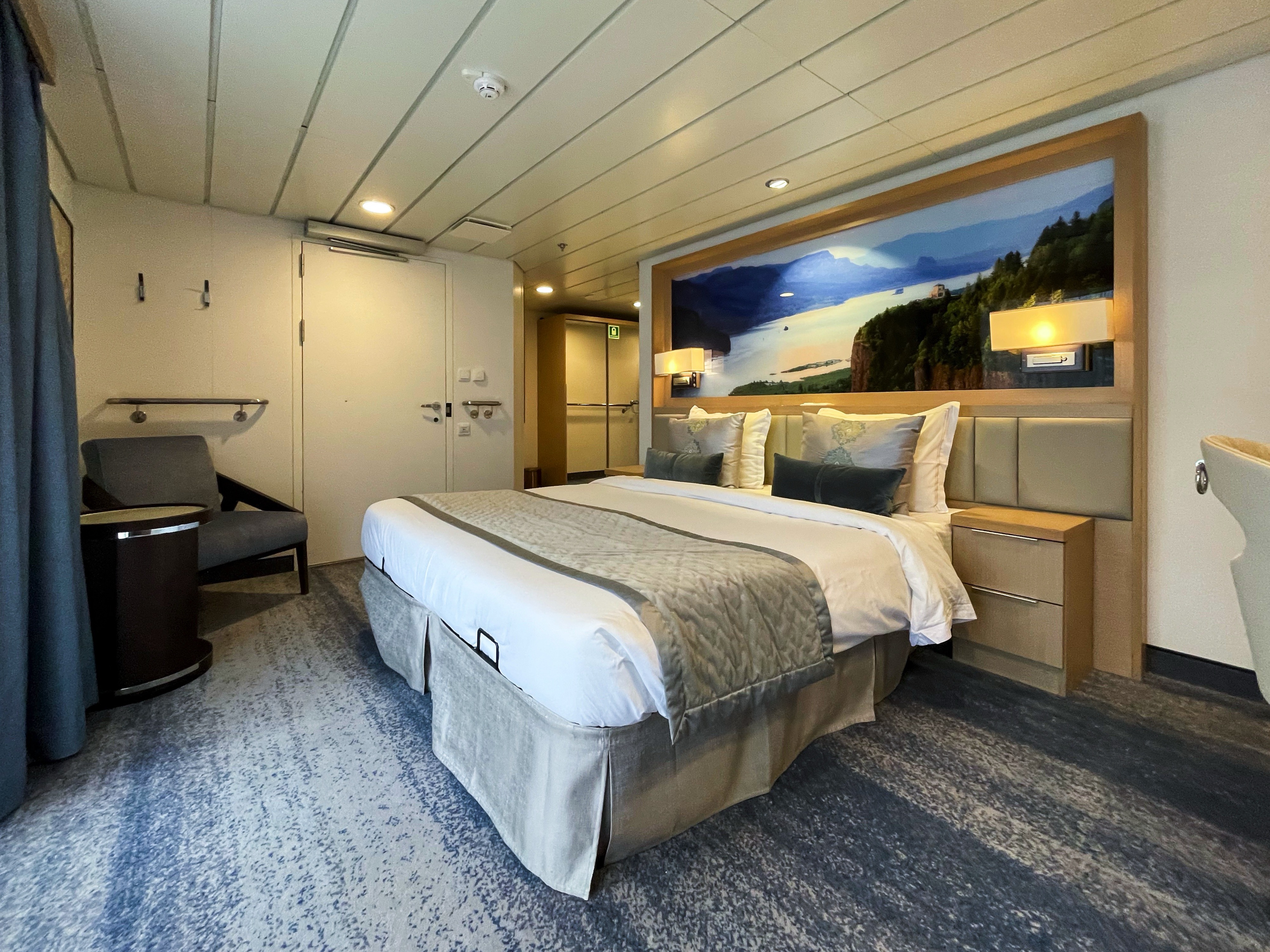
Located throughout the ship and approximately 208 sq. f. (19.3 sq. m,) in size, these cabins have one double bed that can be configured into two singles, and seperate sitting area furnished with two club chairs and a reading table. There is a floor to ceiling glass view that opens to a walkout balcony. There is also a desk and chair, TV, state of the art ‘infotainment’ system and private bathroom with shower, vanity and heated floor. Note: 611 and 612 do not have the club chairs and a reading table.
Bed Config.
One double bed made up of two twin berths plus fold out sofa bed
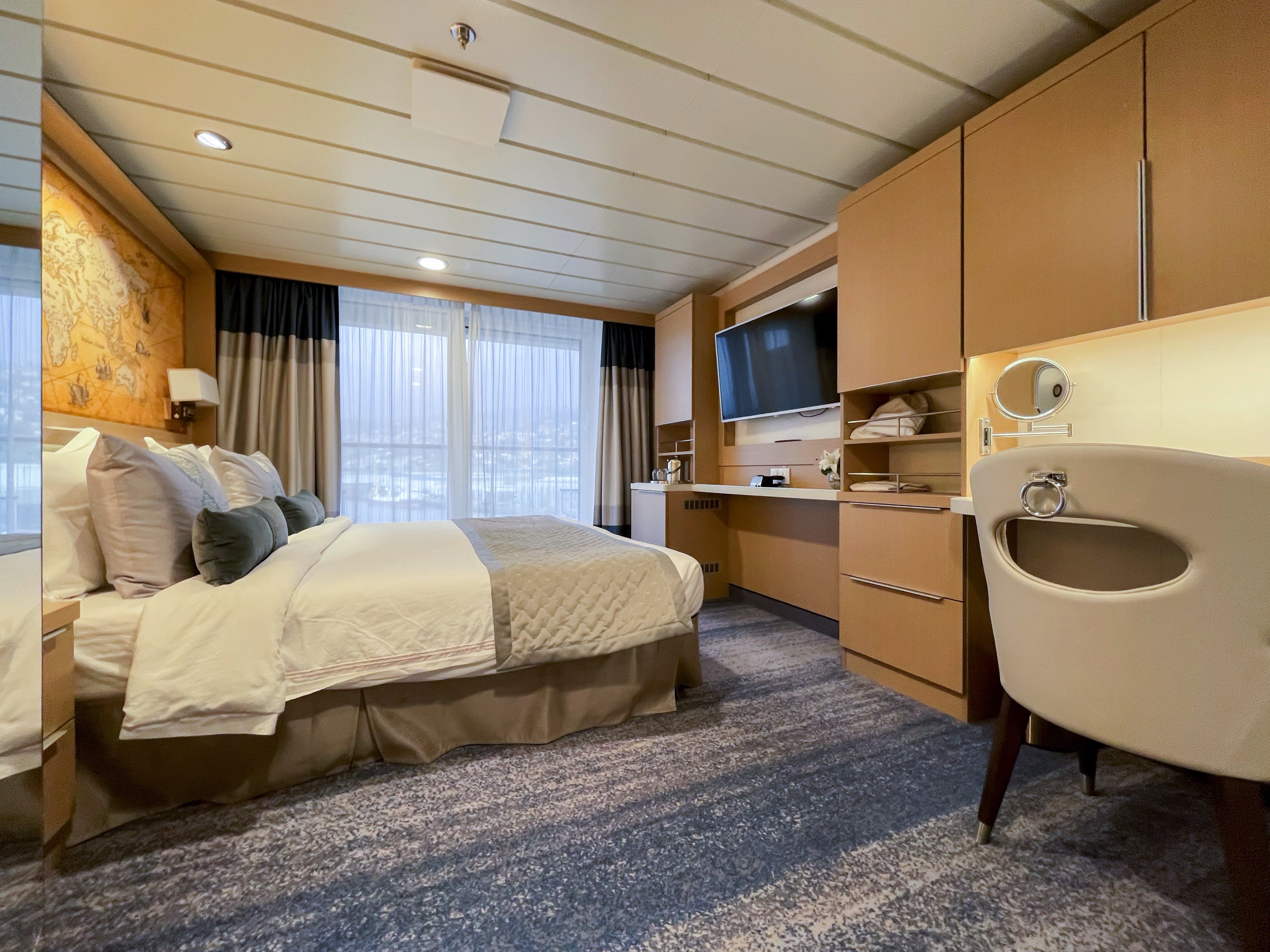
Located on Deck 4 and approximately 182 sq. f. (16.9 sq. m,) in size, these cabins have one double bed that can be configured into two singles. There is a floor to ceiling glass view that opens to a walkout balcony. There is also a desk and chair, TV, state of the art ‘infotainment’ system and private bathroom with shower, vanity and heated floor.
Bed Config.
One double bed made up of two twin berths
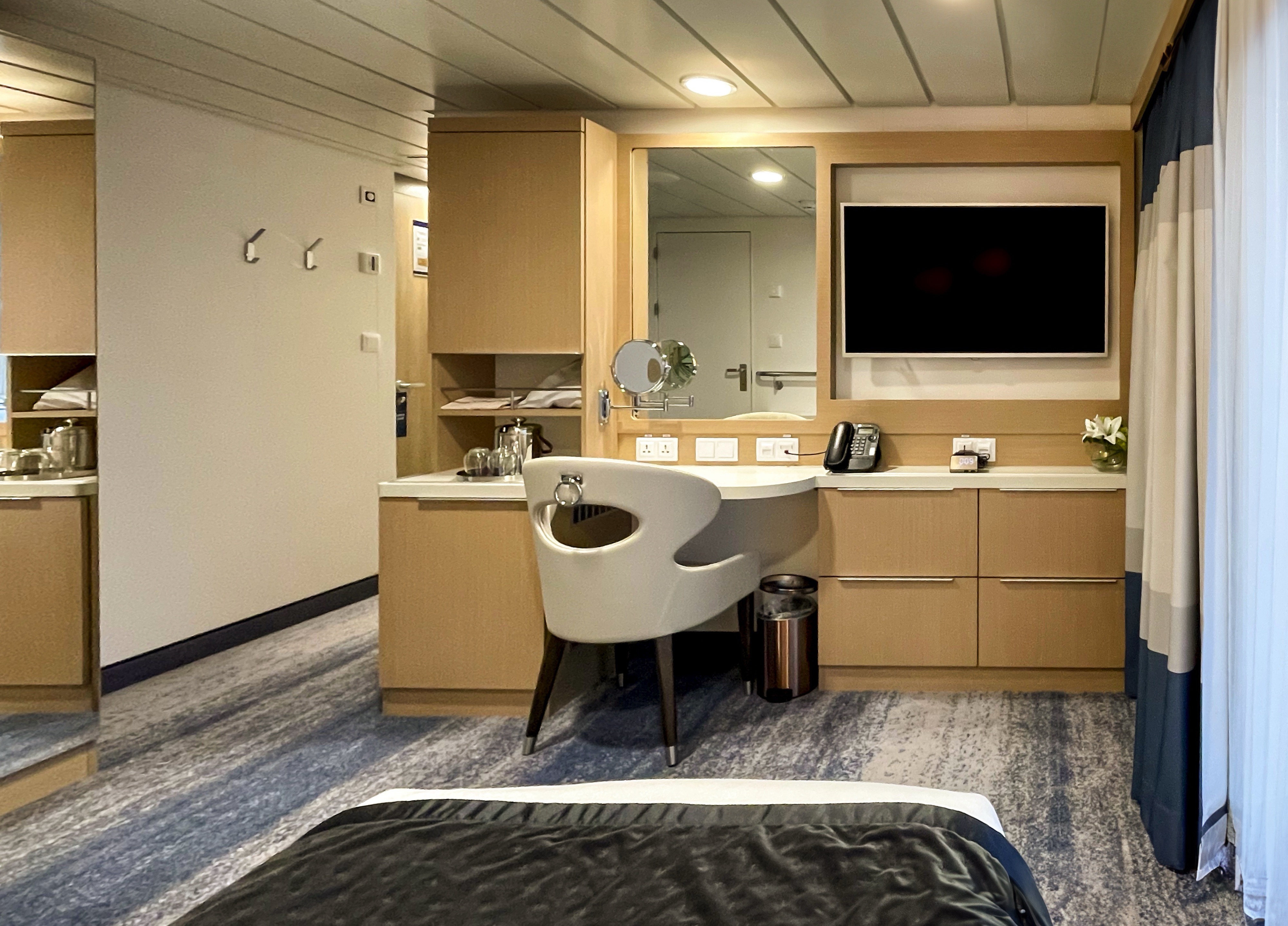
Located on Deck 6 and approximately 173 sq. f. (16.1 sq. m,) in size, these cabins have one double bed that can be configured into two singles.
There is a floor to ceiling glass view that opens to a walkout balcony. There is also a desk and chair, TV, state of the art ‘infotainment’ system and private bathroom with shower, vanity and heated floor.
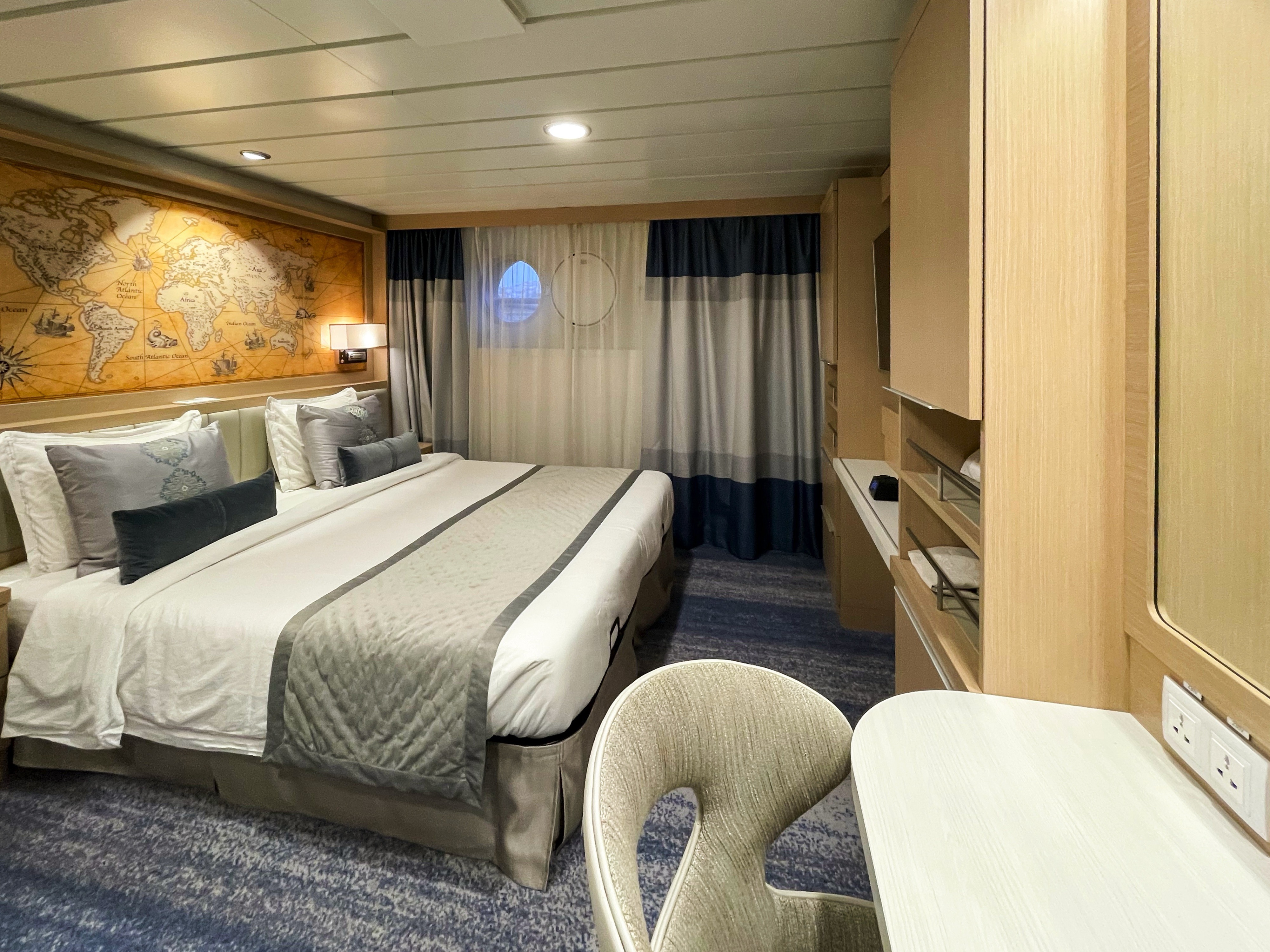
Designed for one. These cabins are located on Deck 3 and approximately 166 sq. ft. (15,4 sq. m,) in size, with one double bed and a porthole view. There is also a desk and chair, TV, state of the art ‘infotainment’ system and private bathroom with shower, vanity and heated floor.
Bed Config.
One double bed made up of two twin berths
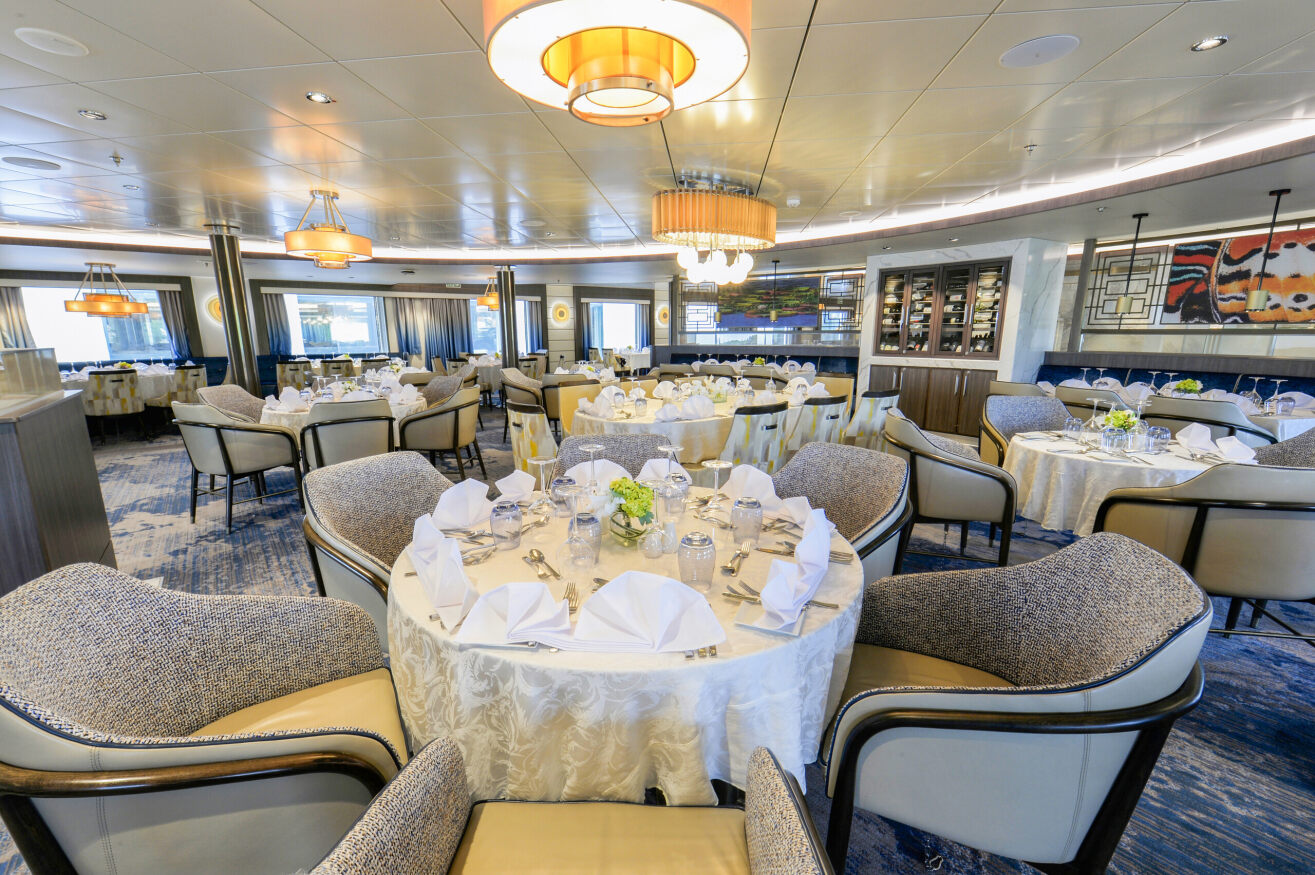
Contemporary meets cozy in this modern dining room with its stylish lighting and contemporary art. Located on Deck 5, the Main Dining Room seats 144 guests, and features expansive floor-to-ceiling windows that open onto the spectacular polar wilderness.

Tasteful and intimate. This stylish, private dining room on deck 5 provides a relaxed dining experience—with views of the polar landscape—for up to 36 guests.

With its marine blue and off-white colors—is your go-to spot for lighter fare and graband-go snacks. This relaxed eatery seats up to 44 guests, who can take in full views of their polar surroundings and wildlife while enjoying a light bite.

With four separate sea-level embarkation points and a fleet of 15 Zodiacs, Ocean Explorer offers a comprehensive breadth of off-ship activities including Zodiac cruising and paddling, allowing you to intimately connect with the polar wilderness.

The perfect polar expedition doesn’t just happen. It takes a team of talented, knowledgeable and experienced professionals to bring it all together. Our Expedition Team is comprised of seasoned veterans with rich backgrounds in marine biology, history, glaciology, geology and more. With the highest staff-to-guest ratio in the industry, our Expedition Teams safely deliver your trip-of-a-lifetime to maximize your polar adventure every step of the way.
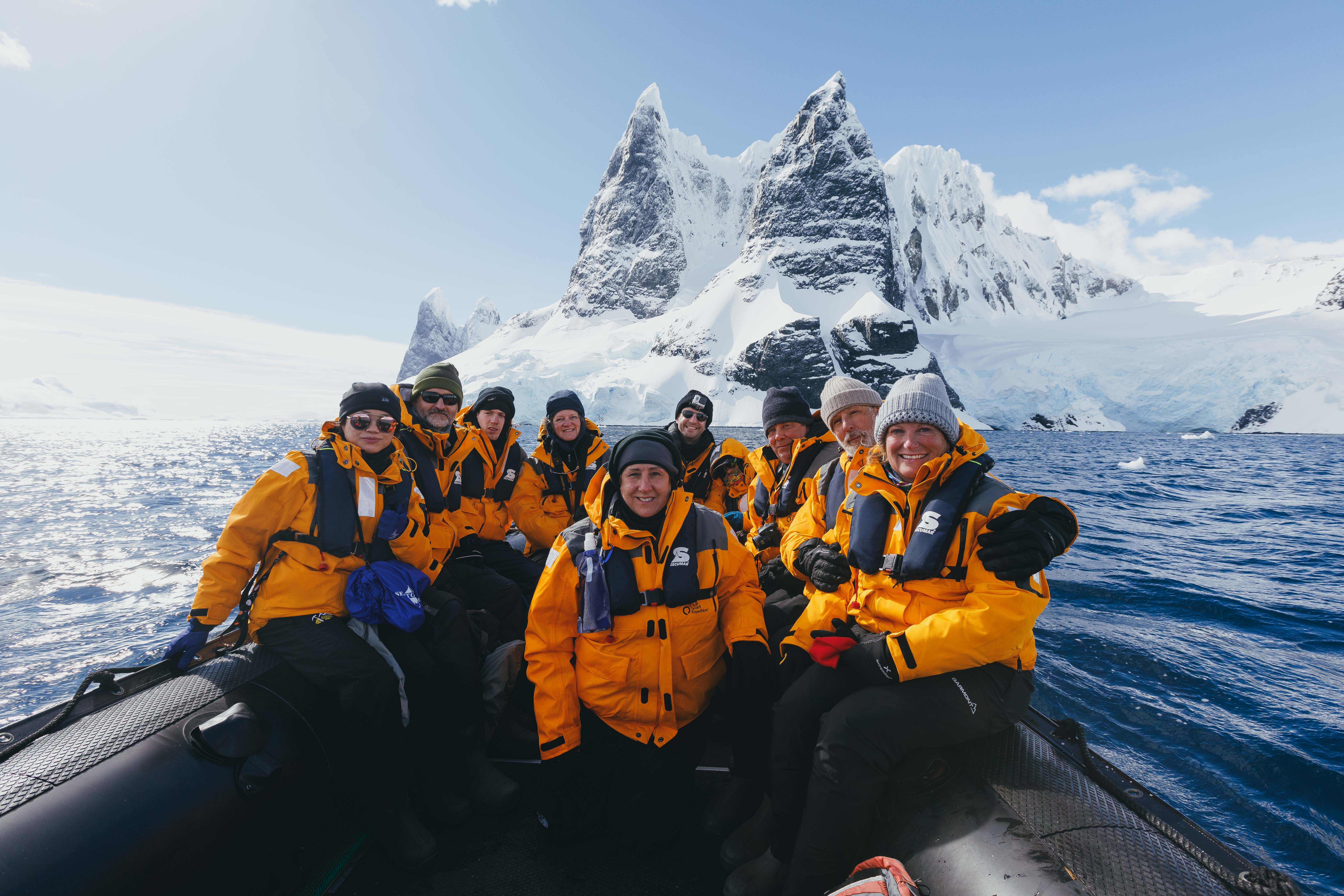
Zodiacs are used for transferring you ashore, transporting your luggage when necessary and for taking you ocean-level cruising among icebergs, whales and seabirds. During the expedition, you will visit remote and isolated sites that are accessible only by Zodiac.
These large, heavy-duty inflatable vessels are extremely safe and were specially designed for expedition work. Zodiacs are the workhorses of Polar expeditions. Separate air compartments retain a large reserve of buoyancy even if these sturdy boats are damaged. Their flat bottom design permits the craft to land directly onto the cobble and ice-strewn beaches that you will encounter on your Polar expedition.

Sea kayaking is offered on all of our departures and you require no previous experience to enjoy this activity. Our sea kayaks are the ideal means by which to get some good exercise and explore the cliffs and shores of the various visitor sites around the archipelago. A typical cruise week offers great opportunities to go kayaking around secluded coves, shores, mangrove estuaries and beautiful beaches. Galapagos penguins, flightless cormorants, sea lions and many other animals can be seen up close on a kayak and even as they swim.

Stand-up Paddleboarding, popularly known as SUPing, originated in Hawaii. Quark Expeditions is the first company to bring this watersport all the way to Antarctica.
SUPing combines the immersive experience of kayaking but in a standing position. Participants, if they prefer, can kneel, sit or even lie down and stare up at the azure Antarctic sky. Because of their wide base and tail fins, SUP boards are quite stable, enabling participants – after a bit of practice – to stop staring at their feet and admire the surrounding scenery. Imagine seeing Gentoo penguins gliding below you, or making eye contact with a Weddell seal lying on a piece of ice as you paddle by.
Guests receive on-ship and on-water instruction from a qualified SUP guide. In addition, a safety driver (in a Zodiac) stays within range to offer assistance.
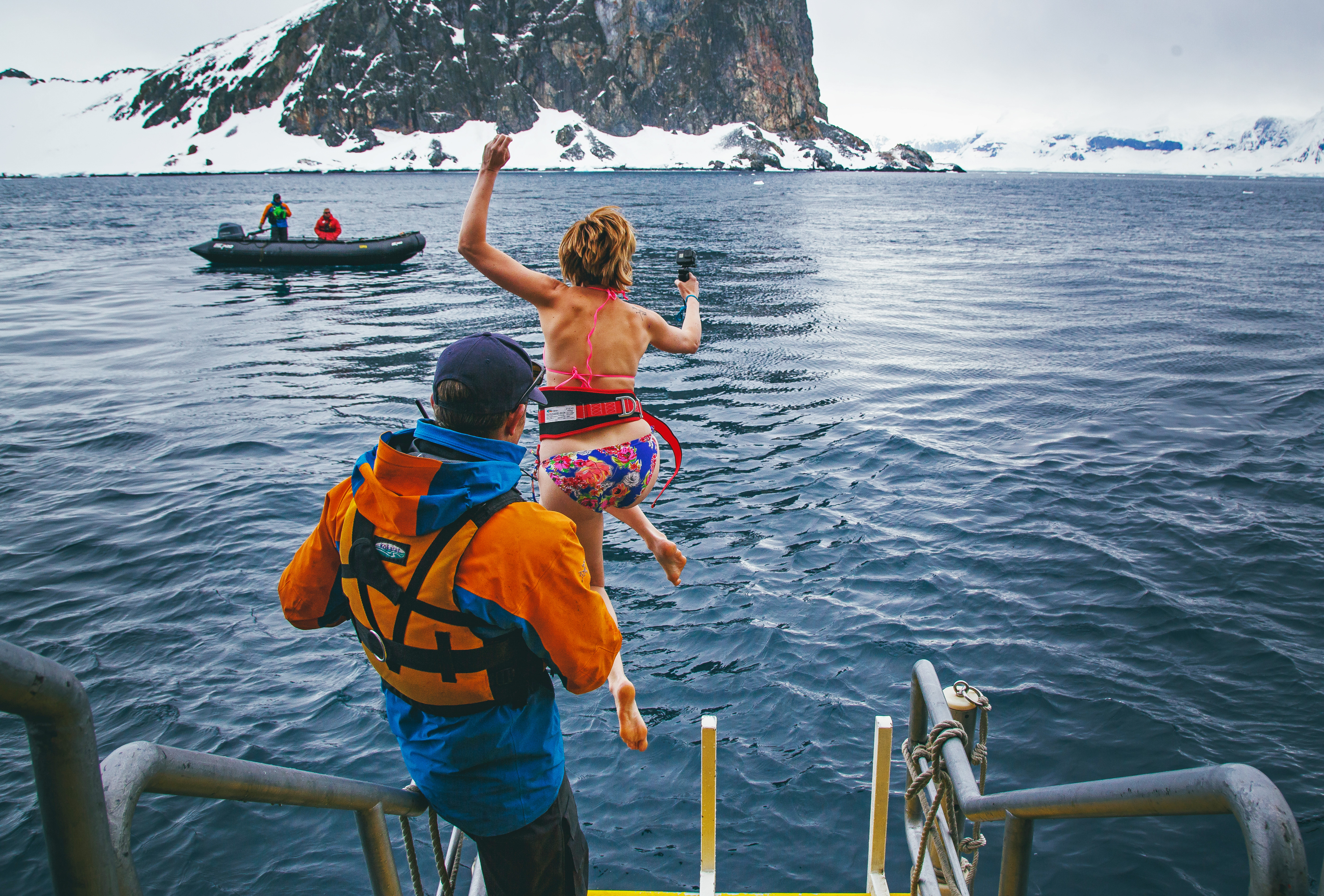
The Polar Plunge is scheduled once during each voyage. Throughout the journey, the Expedition Leader and Captain constantly monitor conditions in order to choose the optimal time and location. The Polar Plunge sometimes takes place onshore or, in many cases, from the gangway or Zodiac. All participants wear a tethered harness and plunge into the polar waters from the side of Zodiac or safety of the gangplank cheered on, of course, by fellow passengers and Expedition Team.
Safety is paramount—the onboard physician always attends the Polar Plunge. Guides in survival gear circle the area in Zodiacs as guests take their turn jumping or cannon-balling into the polar waters.
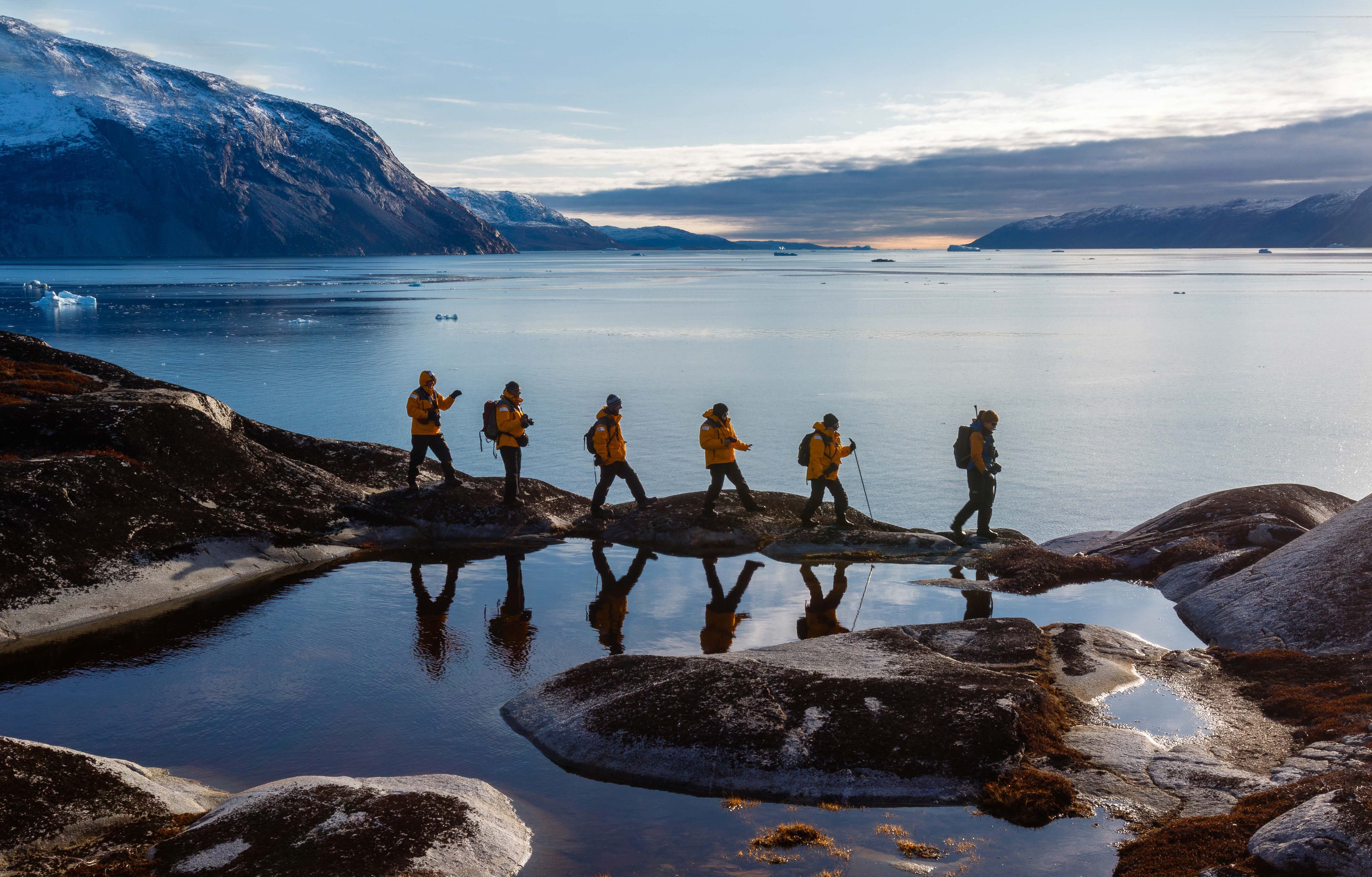
Hiking in the polar regions differs from your typical trail experience. Here, in a tree-less terrain, you are the tallest figure on the landscape as you walk over spongy tundra, crusty snow or sandy beaches in remotes parts of the Arctic and Antarctica. Stepping ashore anywhere in the polar regions means you’re not a distant observer.
Our organized hikes range from short jaunts to the top of lookouts or visits to see wildlife or longer walks of several kilometers over ice and rock and snow. Hiking excursions may last from two to three hours with plenty of time for photographs of wildlife, learning moments from your experienced guides, or just time to stand back and admire the incredible polar surroundings.
No experience is necessary but participants should be able to get in and out of a Zodiac and walk on uneven terrain. Hiking options are tailored to all interests and abilities, from those who want to contemplate the landscape in silence to photographers who want that perfect image to energetic travelers who want to summit a peak in the hopes of seeing wildlife in their natural habitat.

Explore the ocean from a more intimate vantage point on a sit-on-top kayak. No experience is required to manoeuvre these very stable kayaks, allowing you to enjoy an unforgettable experience on the water, taking in breathtaking landscapes and wildlife. Whether it’s your first time in a kayak or you want greater flexibility to try other Adventure options, this shorter excursion is for you.
Paddling in the Polar Regions is highly weather-dependent and a one-time experience. Your kayak guides will attempt to take you out on the water for 1-1.5 hours of paddling. Offered on most voyages, spaces are limited. All equipment, guides and instructions are provided by Quark.
Pricing subject to change based on season. Please proceed to checkout or contact a Polar Travel Adviser for more details.

Imagine for a moment, staring at the stars in the indigo glow of an Antarctic night as you bed down for the night outside in the elements. The buzz of your daily life becomes a distant memory as you listen to the bray of penguin, the ethereal calls of the Weddell sea – even the exhalation of a humpback whale. And then you fall asleep.
Antarctic Camping with Quark Expeditions is an unforgettable experience. After dinner onboard, you’ll be escorted ashore by Zodiac to camp out on the snow for the night in your ready-to-roll bivy sack (tents can be used upon request). Once you decide on your spot, you set up camp and enjoy the peace as the Antarctic night unfolds.
Camping in Antarctica is limited to 50 participants, all of whom will be briefed beforehand on the principals of basic camping. Prior to you settling down for the night, Quark Expeditions staff will prepare the site, including setting up a perimeter in safe, flat to gently-sloping and beautiful site. You’re free to choose where (within the perimeters) you want to settle down for the night.
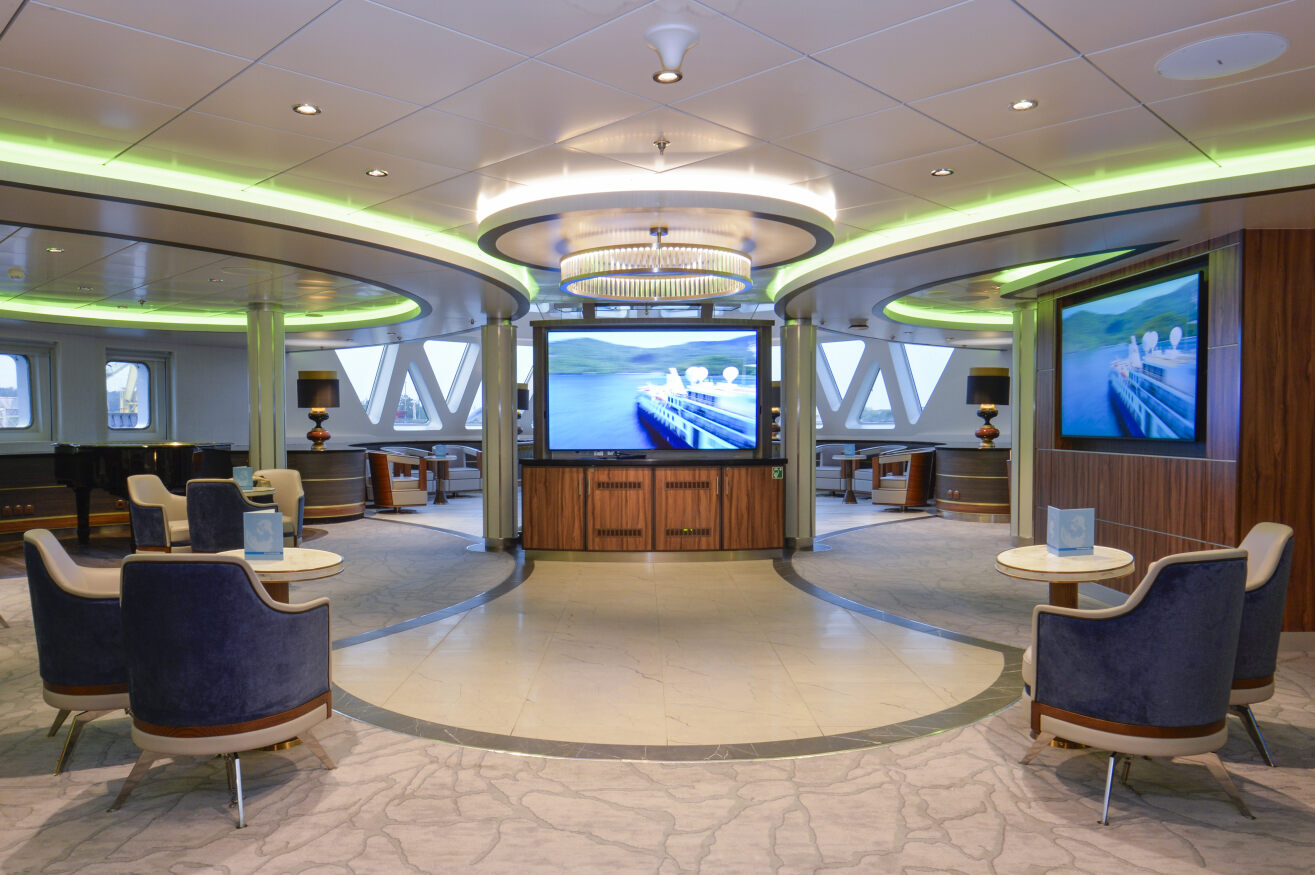
Enjoy daily chats with and presentations by our world-class onboard polar experts—expedition guides, specialists, photography guides and other special guests who will introduce you to the fascinating history, biology, ornithology, glaciology and geology of the region, and much, much more.
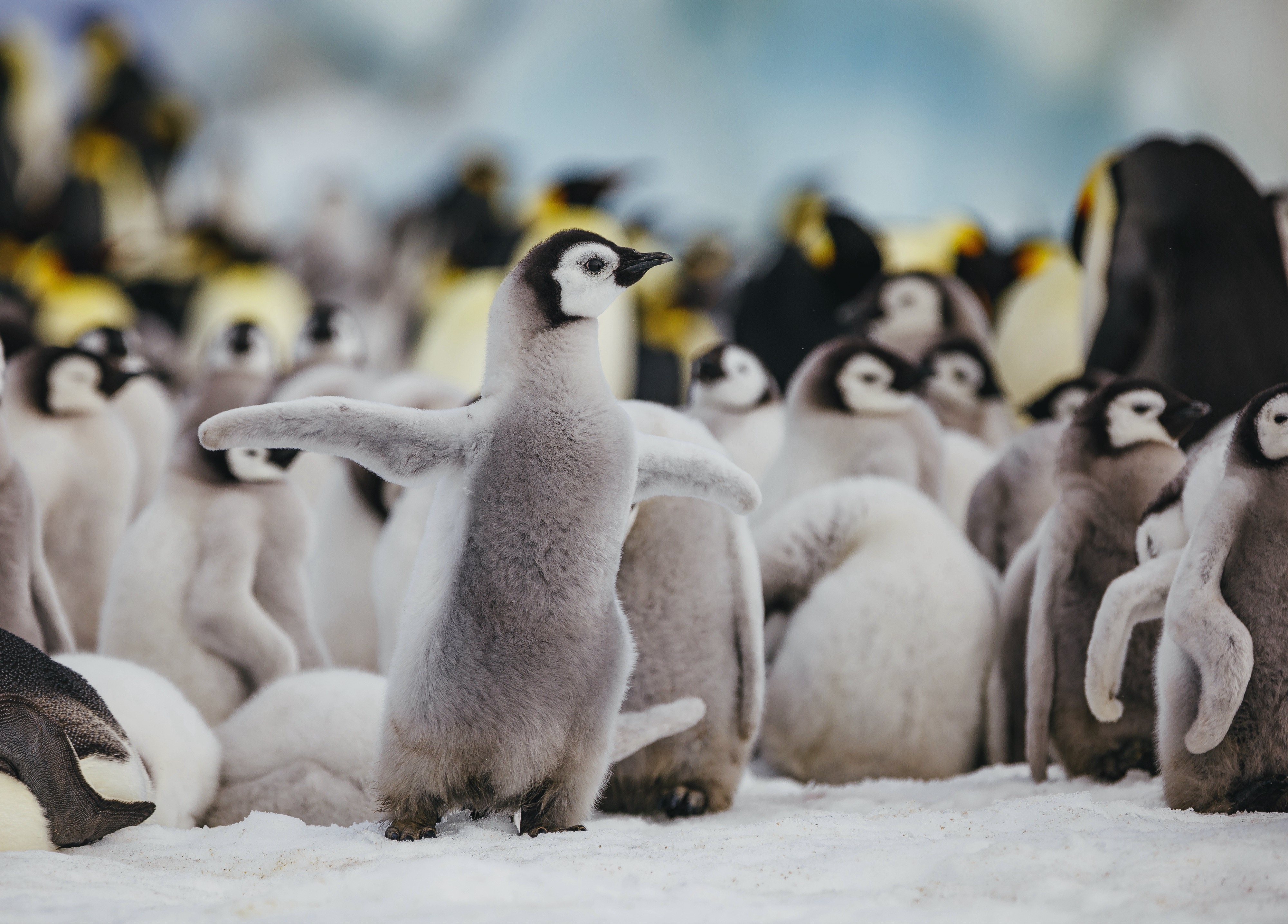
Documenting your voyage so you can take the memories home is a rewarding experience. Our photography guides will help you hone your skills to capture the beauty of the polar regions.
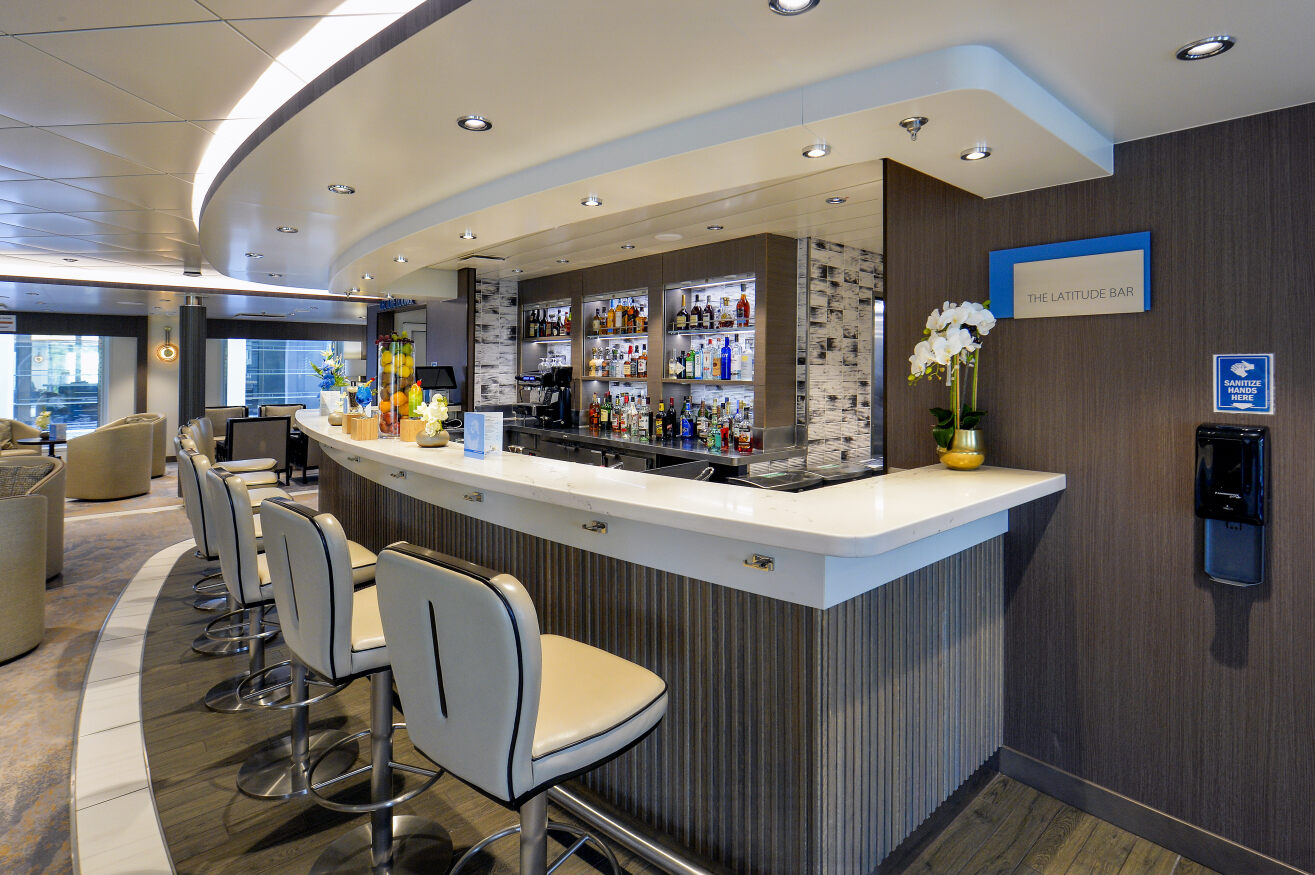
A popular social hub on Deck 5, the beautifully-lit Latitude Bar—with its lush sofas and faux marble-topped end tables—is large enough to seat 46 and is ideal for enjoying a quiet drink on your own or hanging out with friends.

This stylish lounge at the top of the ship guarantees incredible views. Guests also frequent this spacious lookout on Deck 8 to enjoy cocktails and conversation with fellow travelers. Seats 63.
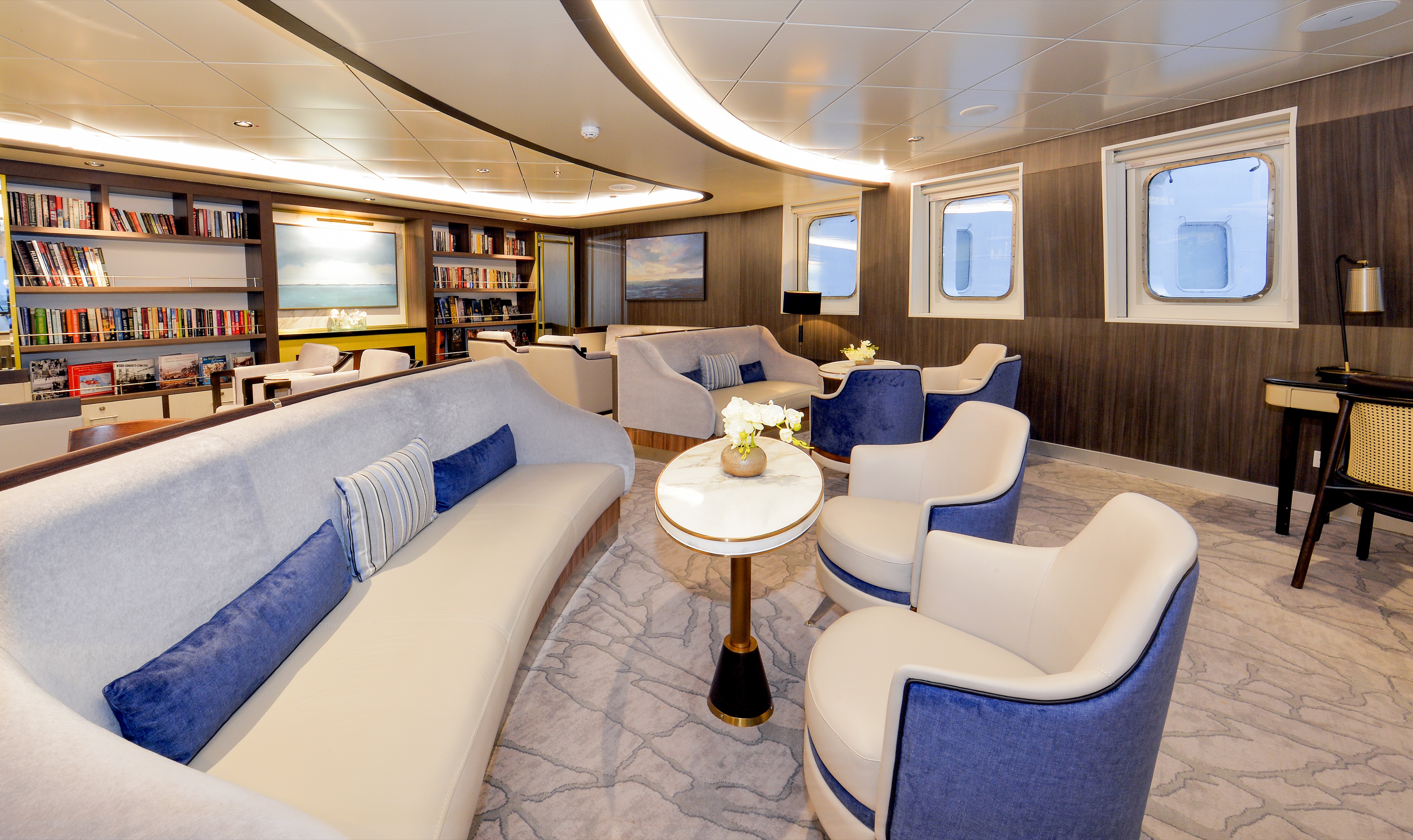
Located on Deck 6 at the top of the gorgeous atrium staircase, this beautiful Library with floor-to-ceiling glass, accommodates up to 47 people.
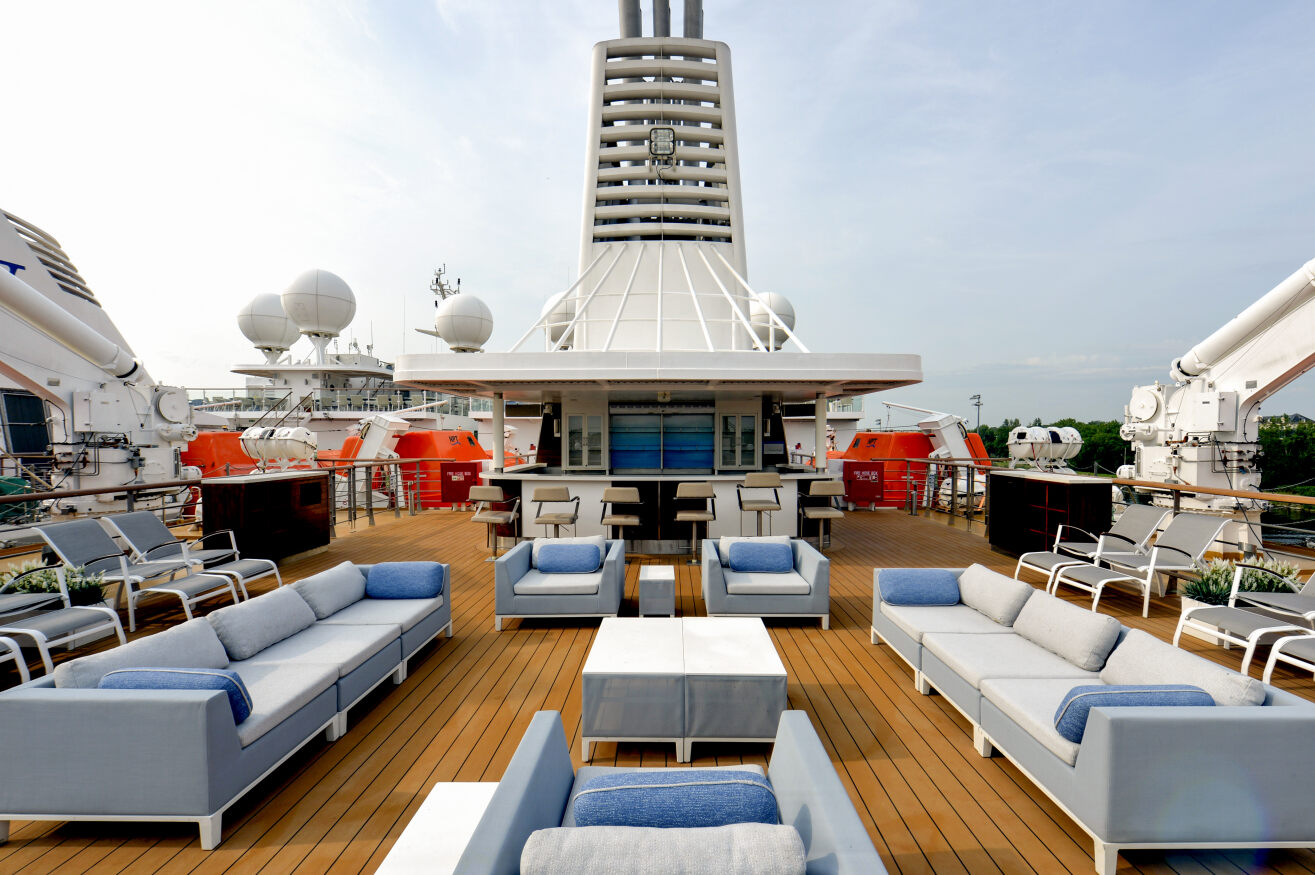
More information coming soon.
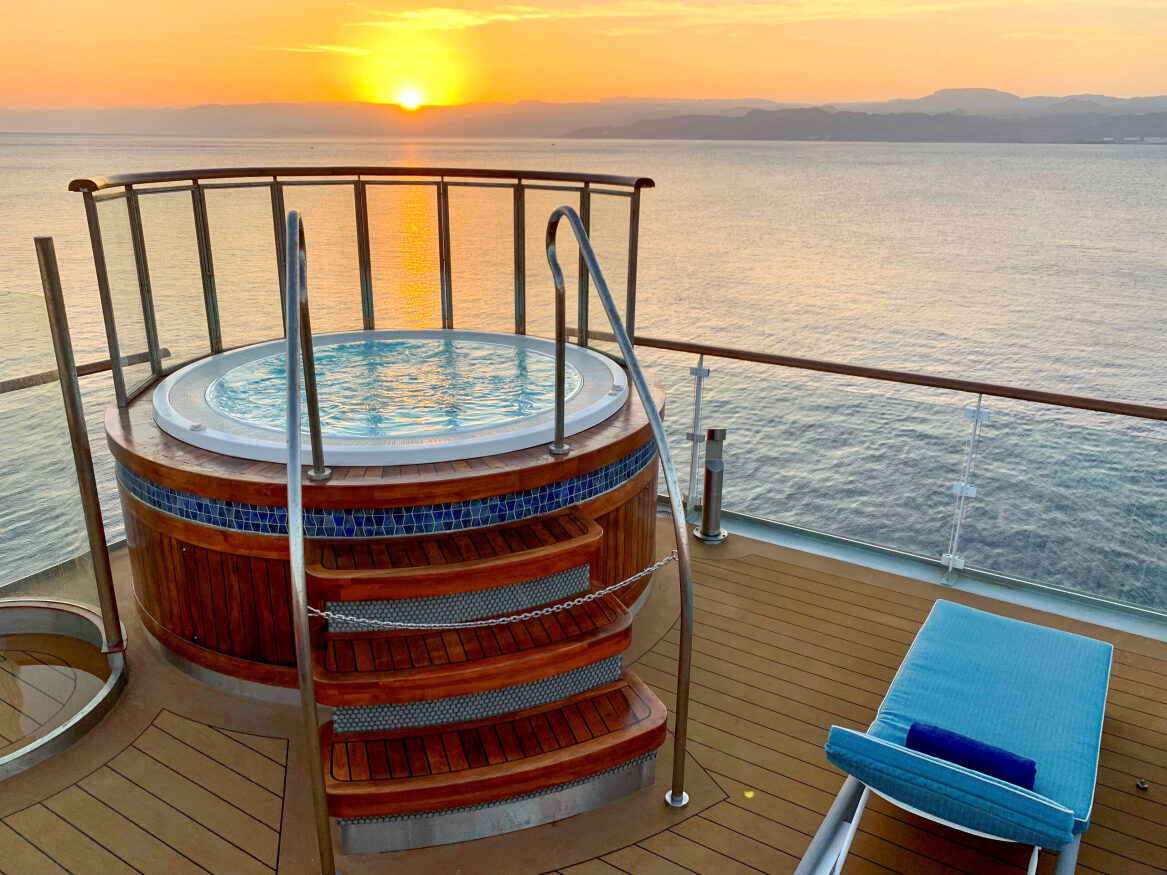
Two outdoor Jacuzzis on deck 7, at the ship’s stern, mean you can relax alfresco while soaking up the breath-taking polar views.
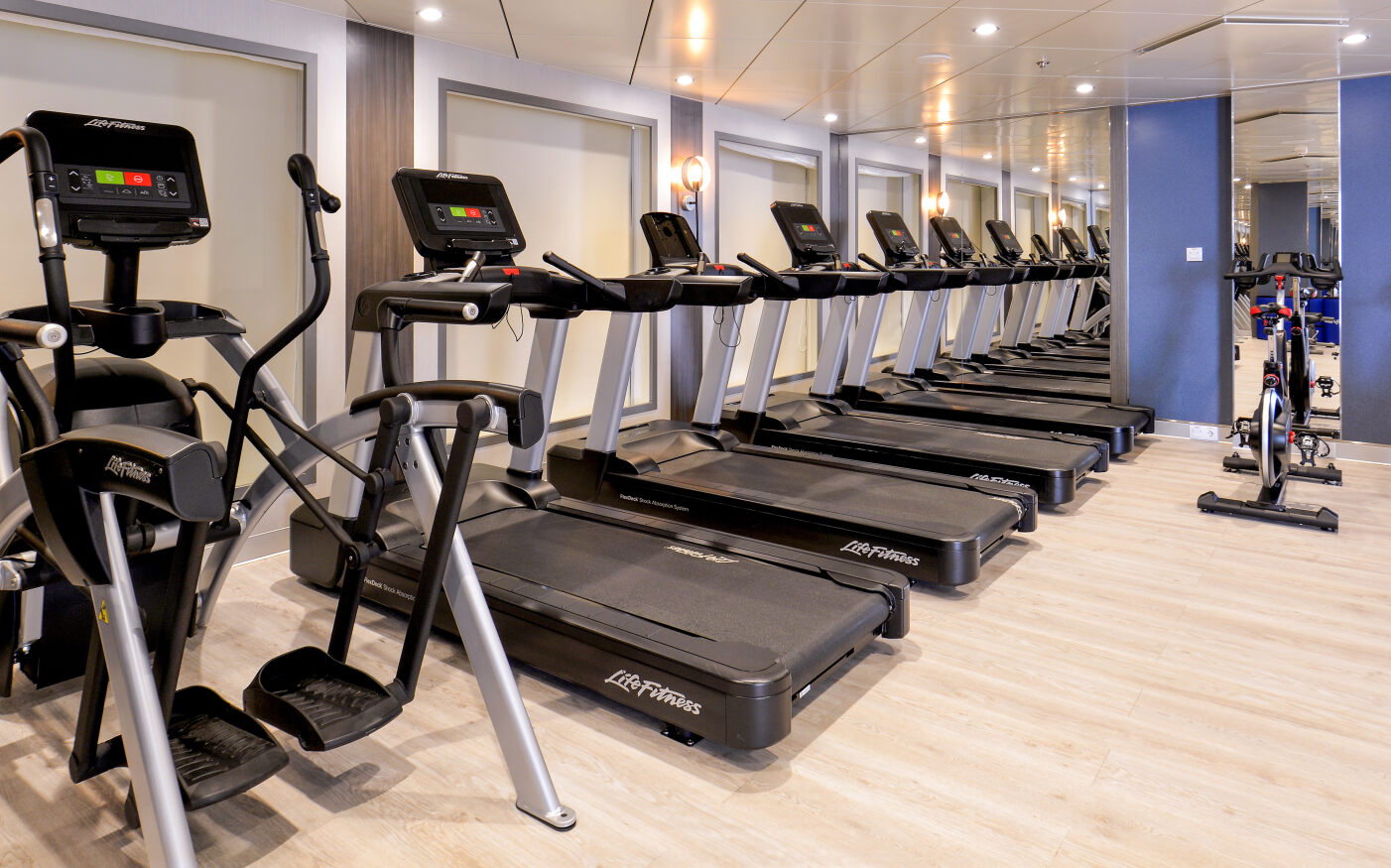
Stay fit with the latest work-out equipment in the Fitness Center on Deck 7.
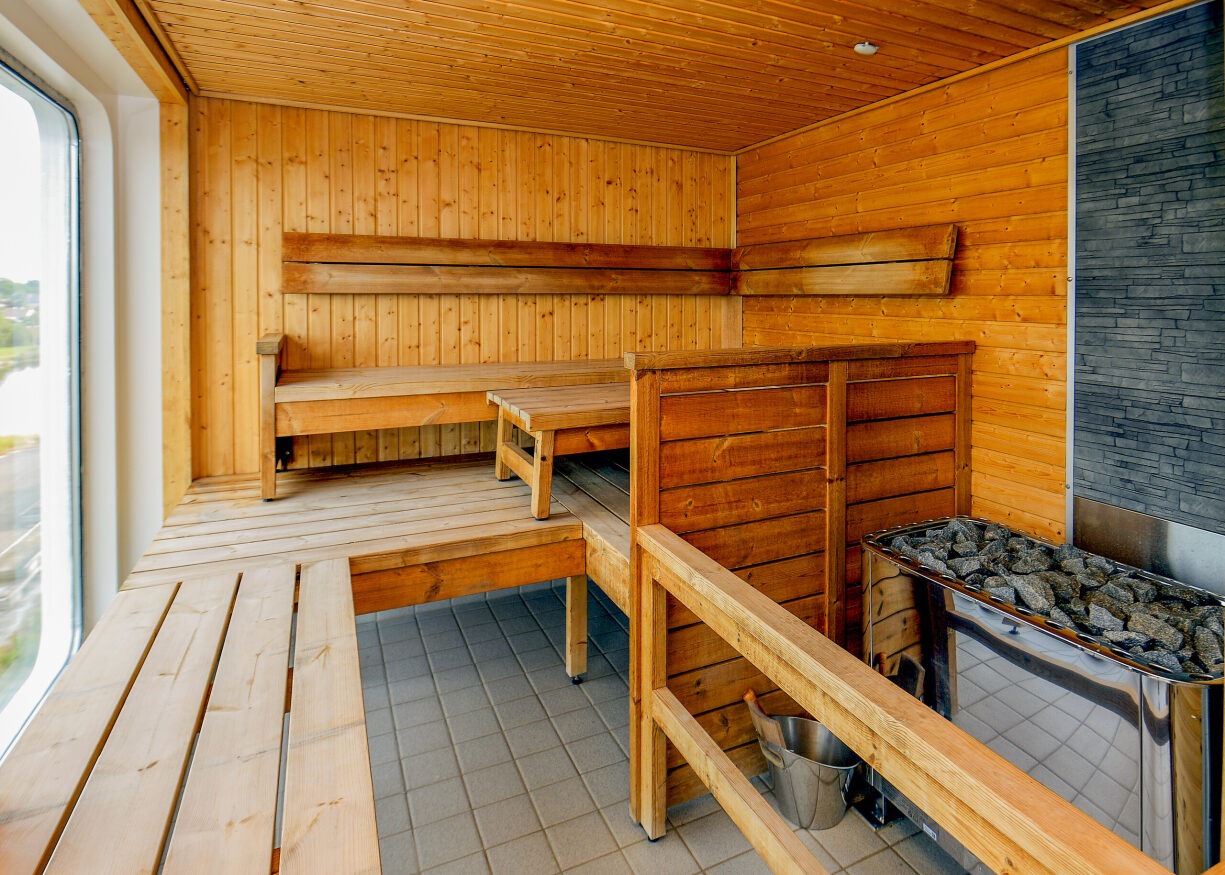
After a day of exciting off-ship adventure, guests can relax on the sauna’s traditional wood benches while gazing at the polar wilderness just outside the large sauna windows. Accommodates 15 people on Deck 7.
With the latest sustainability technology in polar expedition, the ship features fuel-efficient Rolls-Royce engines and the ground-breaking MAGS gasification system that converts waste into energy, eliminating the environmental impact of waste transportation.
Quark Expeditions provides an English-speaking doctor on board who manages a medical clinic stocked with a supply of common prescription medicines and basic first aid equipment.
If you are under regular treatment for any ailment, you must bring a sufficient supply of medicine. We recommend that you pack an extra two weeks’ supply of medication in case of emergency. We cannot accept responsibility for not having a specific brand or type of drug on board. Should you fall ill, the doctor will refer to the medical forms that you completed and returned to us; therefore it is vital that the information you provide is complete and accurate
The dress code on the ship is casual, though some may choose to dress up a little for the Captain’s Welcome Reception.
To protect the health and safety of its guests, Quark Expeditions® maintains a no smoking policy in the interior of the ship including cabins, near Zodiacs and on landings. Smoking on the ship is permitted in the designated smoking area only, which your Expedition∘ Team members will be happy to point out for you. Always make sure to extinguish cigarettes properly and dispose of them in the proper receptacle. Please, never throw cigarettes overboard.
All guests—including vegetarians, meat-eaters, as well as those who follow a gluten-free diet—will be equally impressed with the dining options on our ships. Quark Expeditions® is able to cater to most special dietary requests, as long as you clearly indicate your needs on the required expedition forms when you book your voyage. Menus will be clearly labeled for vegetarian and gluten free options, but please do notify your server of the dietary restrictions you indicated on your form. We regret that kosher food cannot be prepared.
A complete list of laundry fees will be provided on board. Laundry is collected each morning; please allow 48 hours for your laundry to be returned. Ironing services are also available at a minimal charge. We encourage you to take advantage of the laundry services, as it will mean you can pack fewer articles of clothing. If you prefer to hand wash small items in your cabin, please remember to bring environmentally friendly detergent.
When you are not busy exploring the natural beauty of the Polar Regions, you may wish to connect with family and friends back home to share some of your voyage highlights. Guests on Quark Expeditions can now enjoy free Wi-Fi as part of our “Raise a Glass and Stay Connected Free” program. This complementary Wi-Fi service permits basic Internet browsing and voice applications.
Please note that we travel to some of the most remote parts of the world. As we utilize satellite equipment for our connection, Wi-Fi signal may be intermittent.
To access email or internet on your personal computer, tablet or smart phone, connect to the network on your device, where you can access our complimentary plan, or purchase Priority Wi-Fi.
Complimentary Wi-Fi
- Lower speeds
- Suitable for basic internet browsing, texting and voice calling using text and voice apps
- Some site filtering
- No charge
- One device logged in at a time
Priority Wi-Fi
- Higher speeds
- Suitable for larger data volume apps, video calling, video streaming (in lower resolutions) etc.
- See rates by logging in
- One device logged in at a time

- Top Deck

- Observation Deck
- Observation Bistro
- Observation Lounge
- Elevator

- Penthouse Suite
- Owners Suite
- Veranda Stateroom
- Dry Sauna
- Fitness Center
- Jacuzzis
- Bridge
- Observation Deck
- Sun Deck and Bar
- Elevator

- The Discovery Library
- Junior Suite
- Veranda Suite
- Veranda Stateroom
- Elevator

- Main Dining Room
- Private Dining Room
- Reception
- Polar Boutique
- Explorer Lecture Lounge
- Elevator

- Deluxe Veranda Forward
- Veranda Suite
- Veranda Stateroom
- Expedition Desk
- Elevator

- Ready Room
- Medical Facilities
- Zodiac Embarkation Points
- Studio Single
- Elevator

